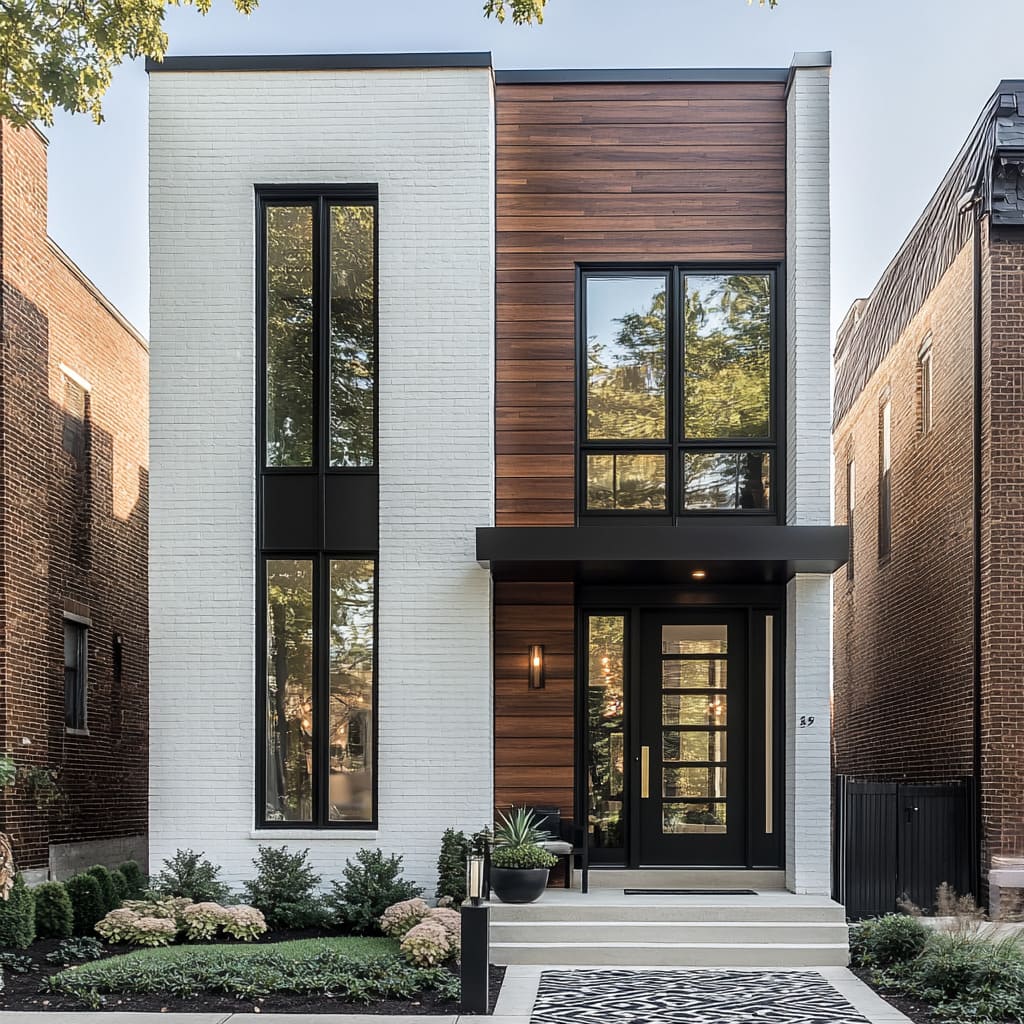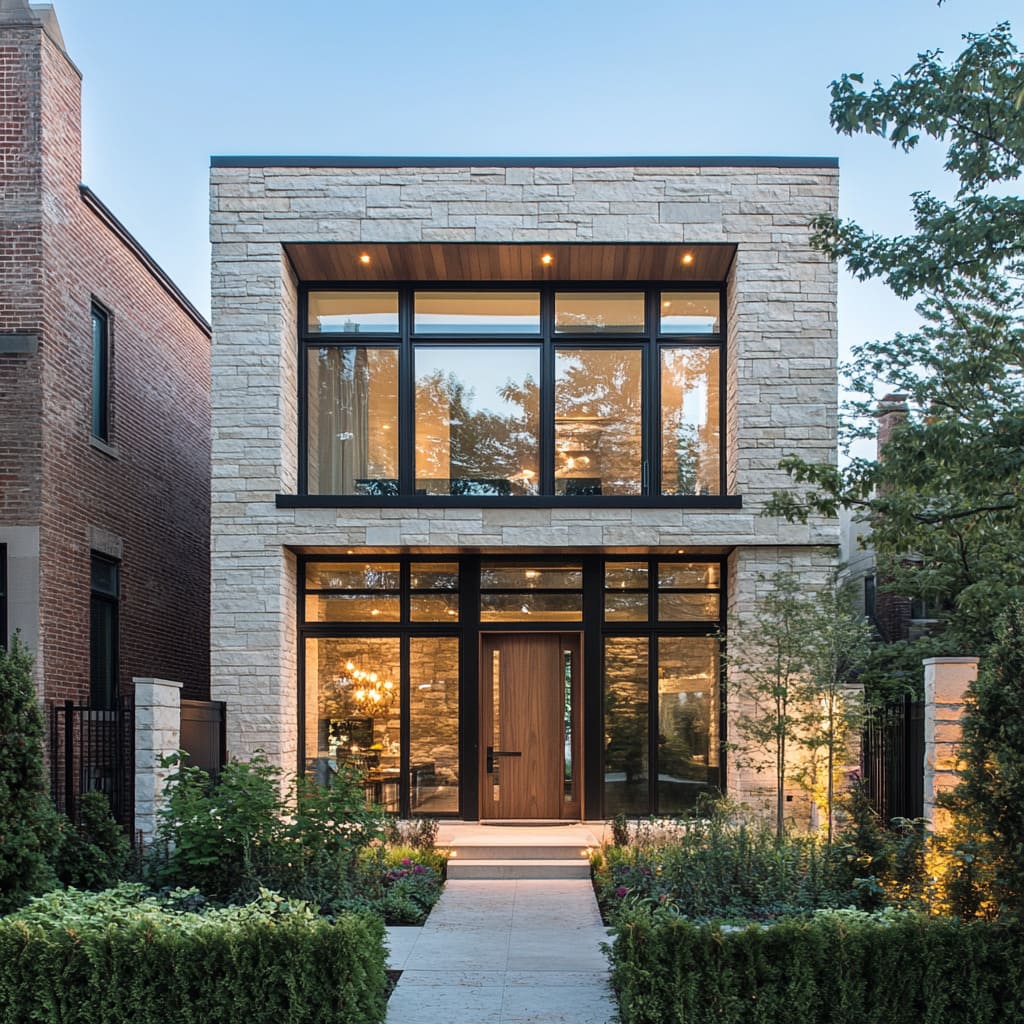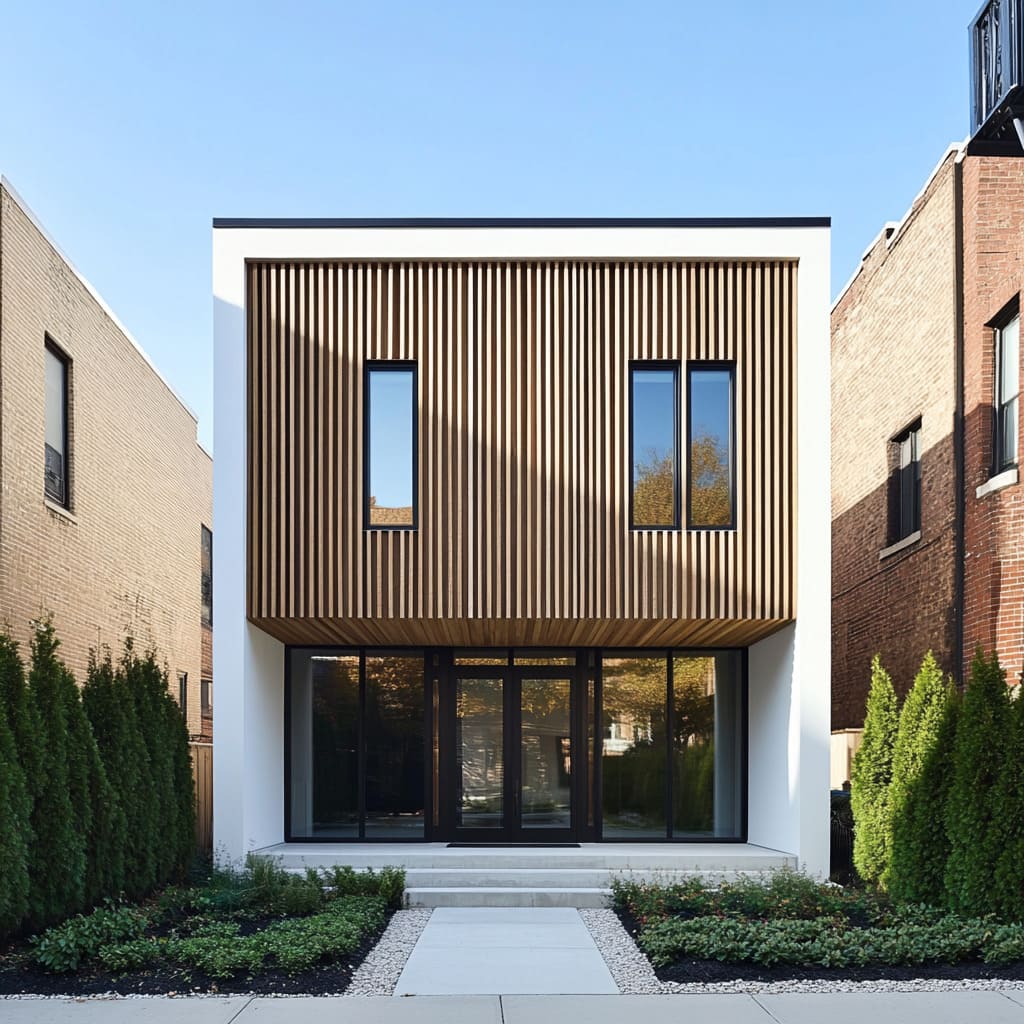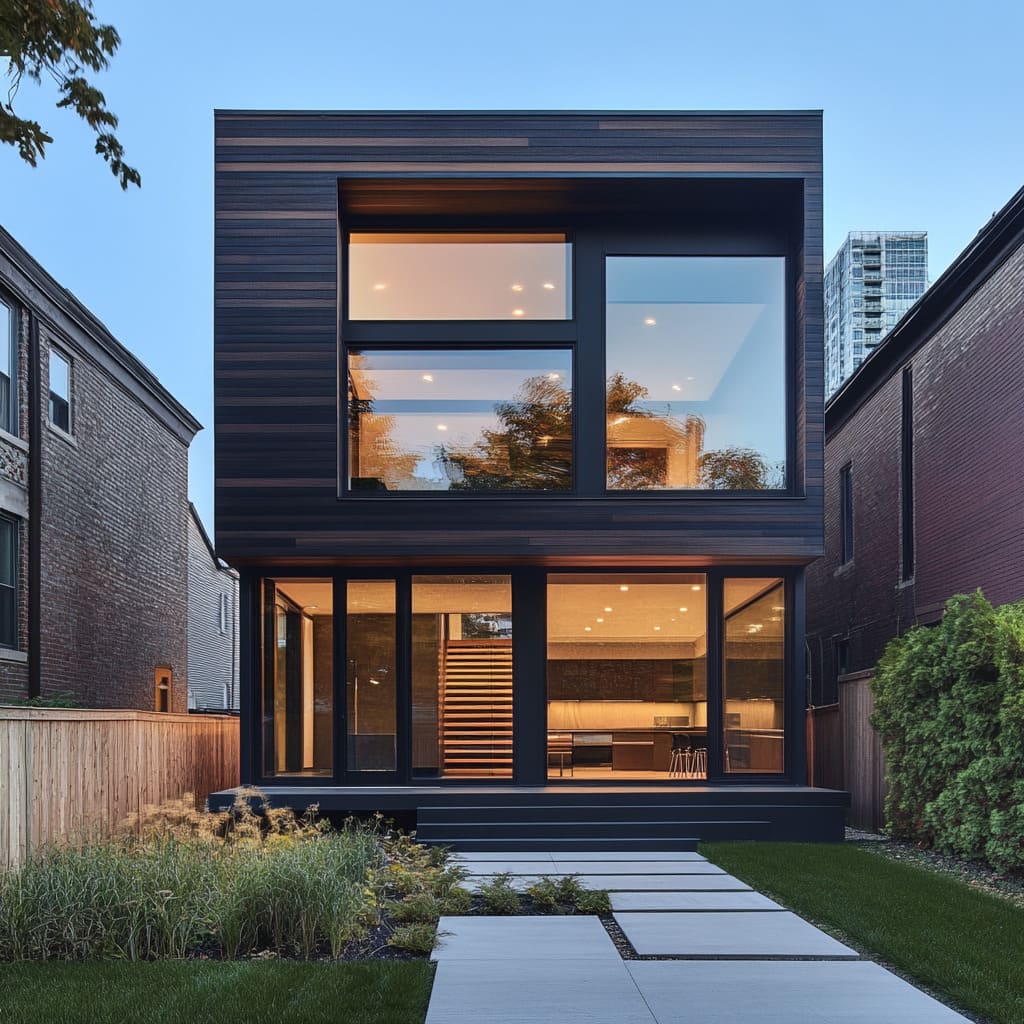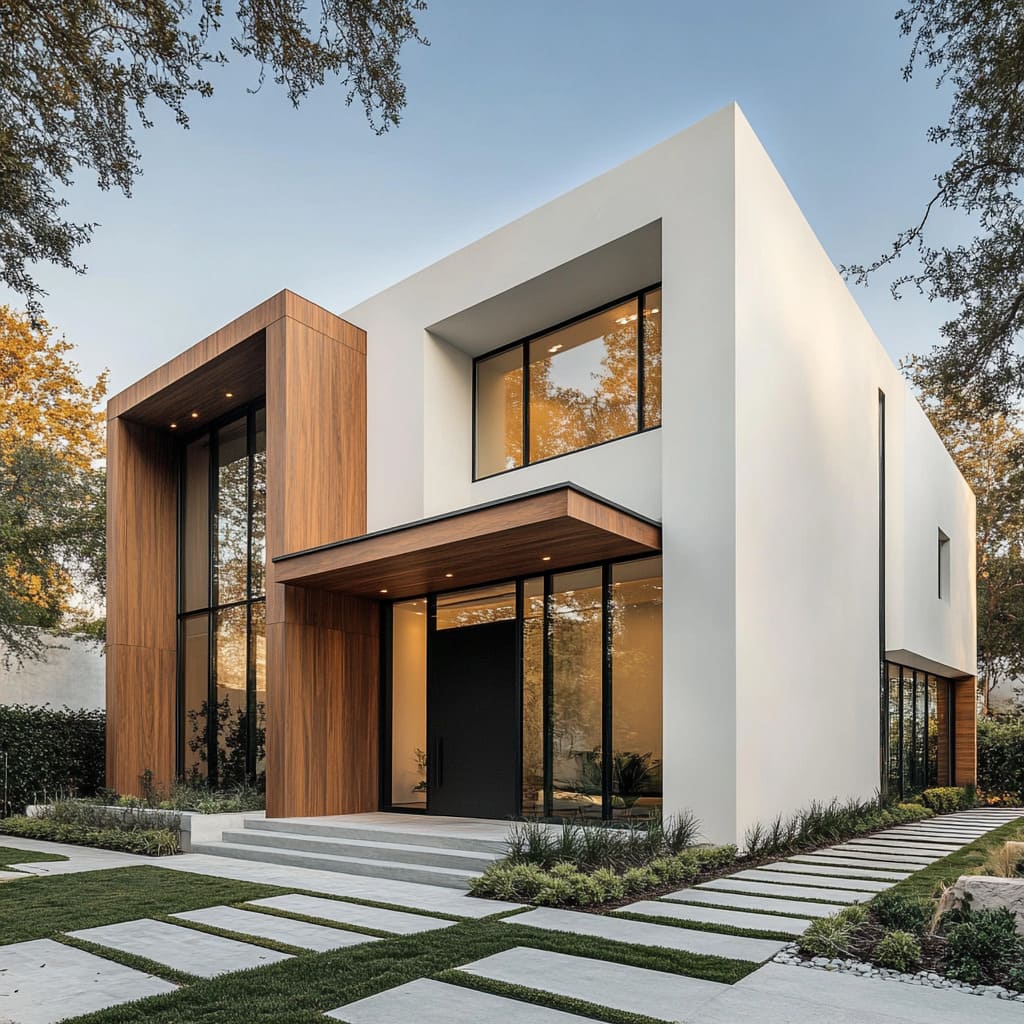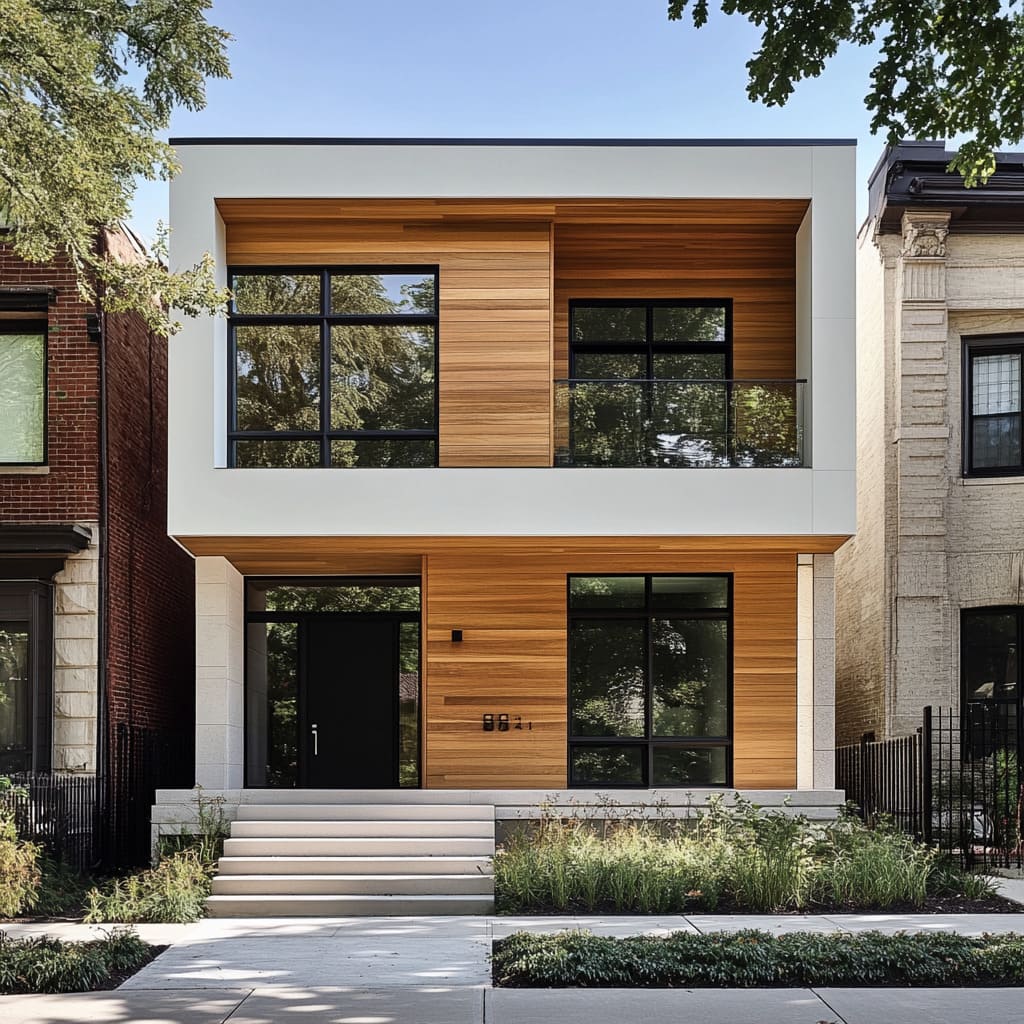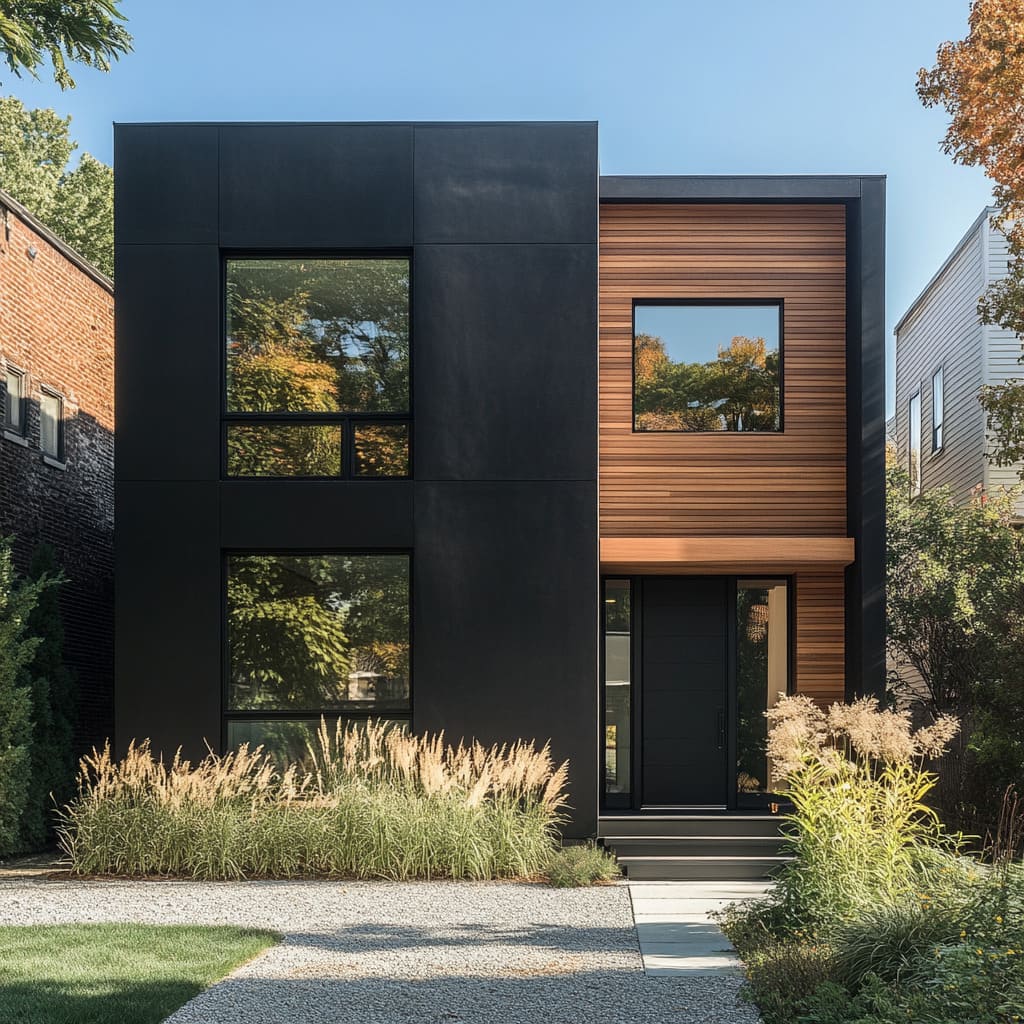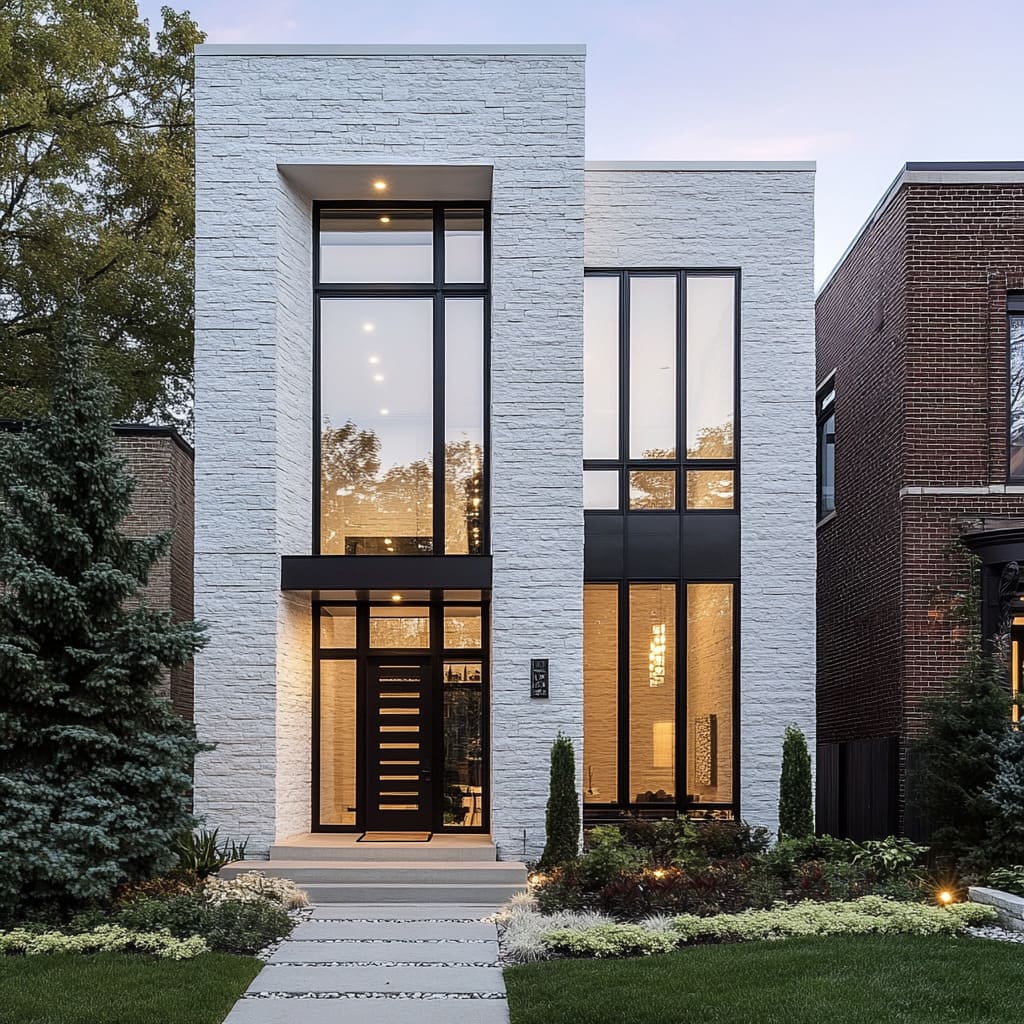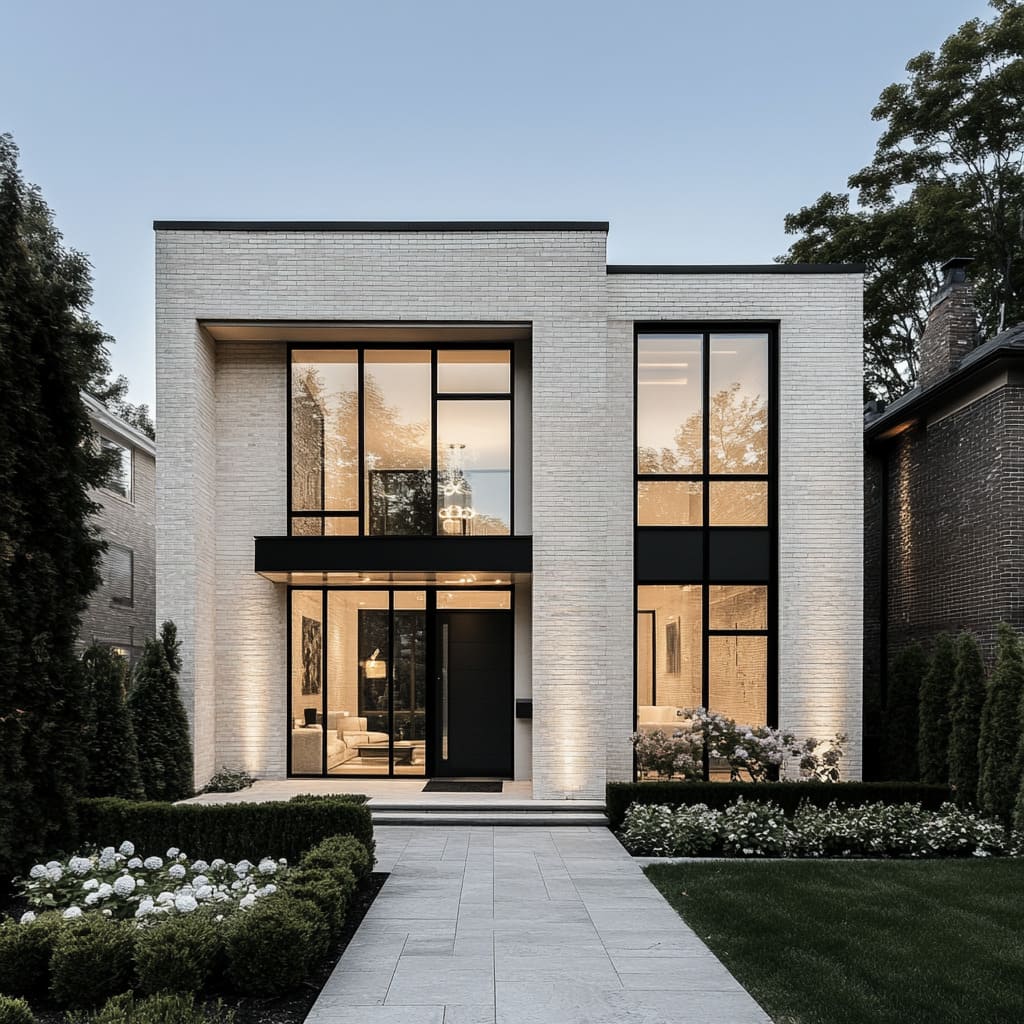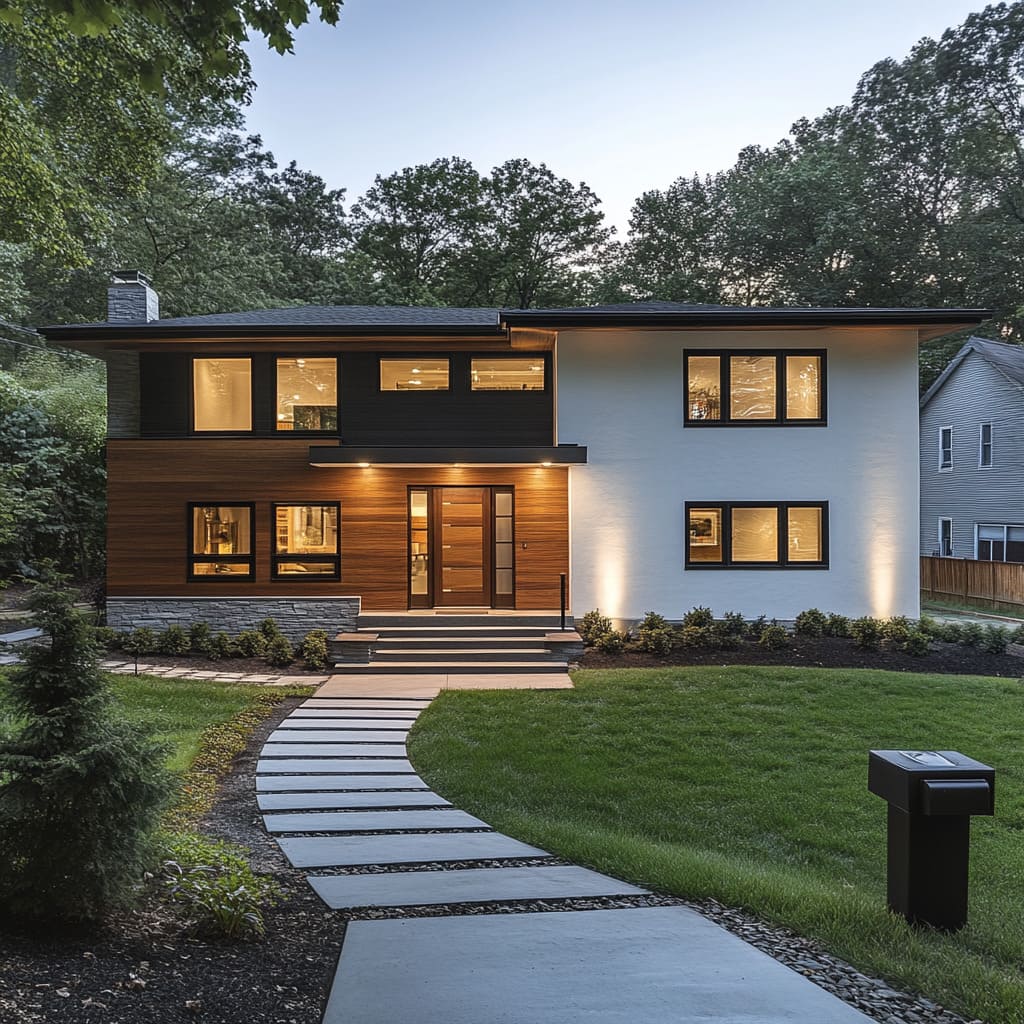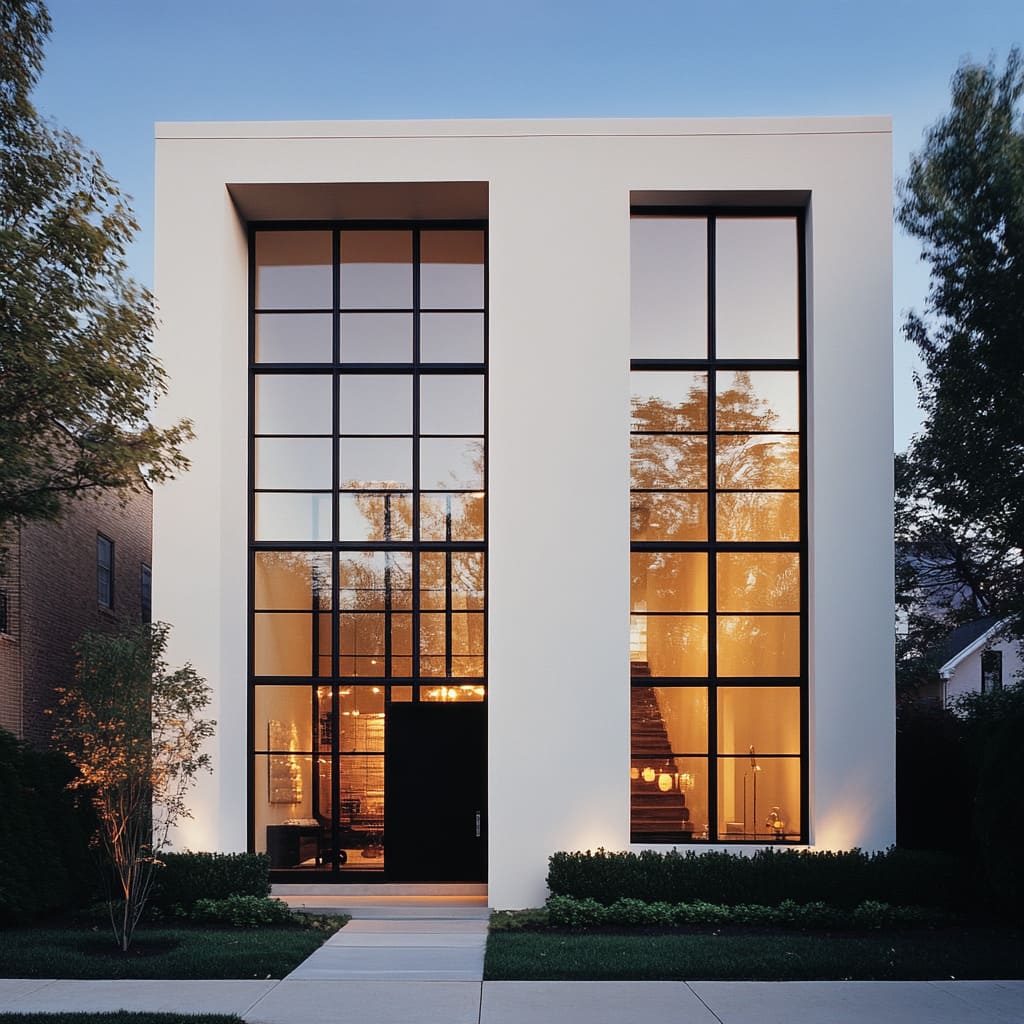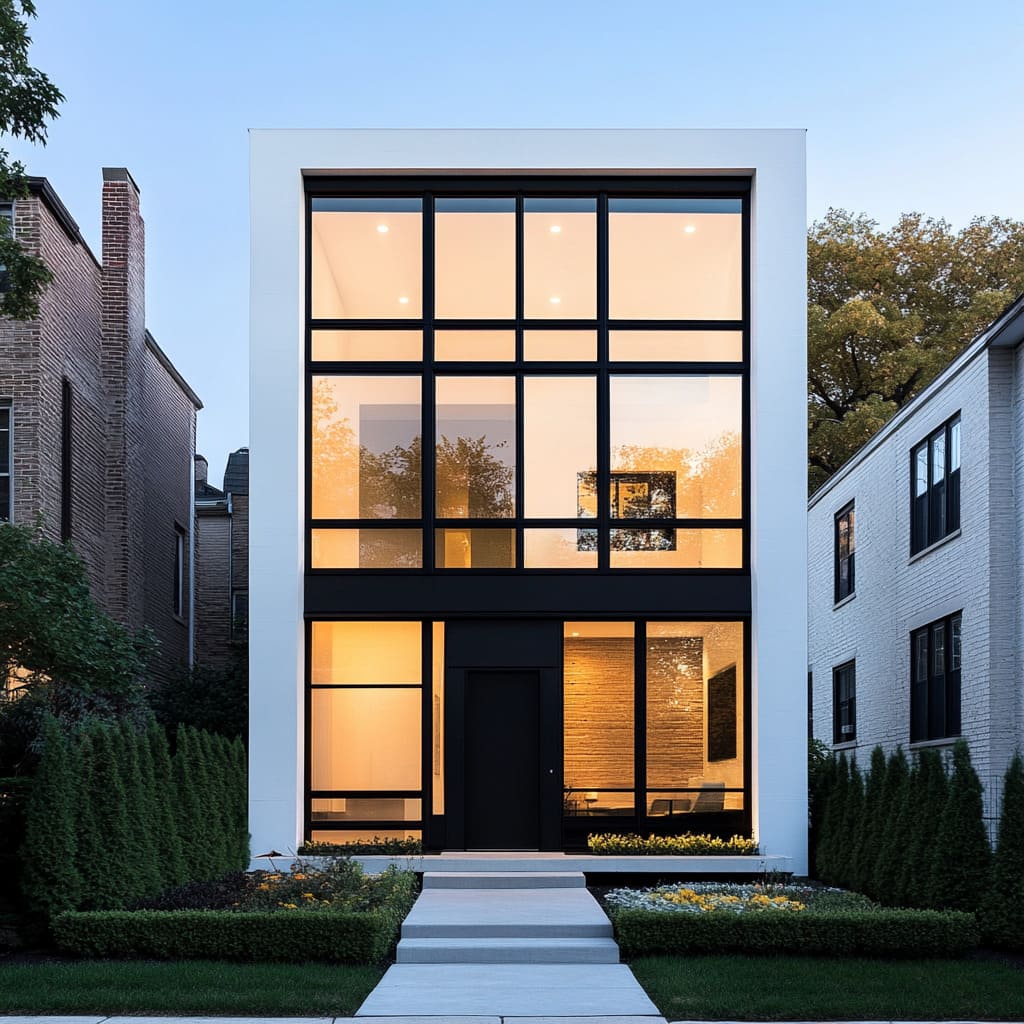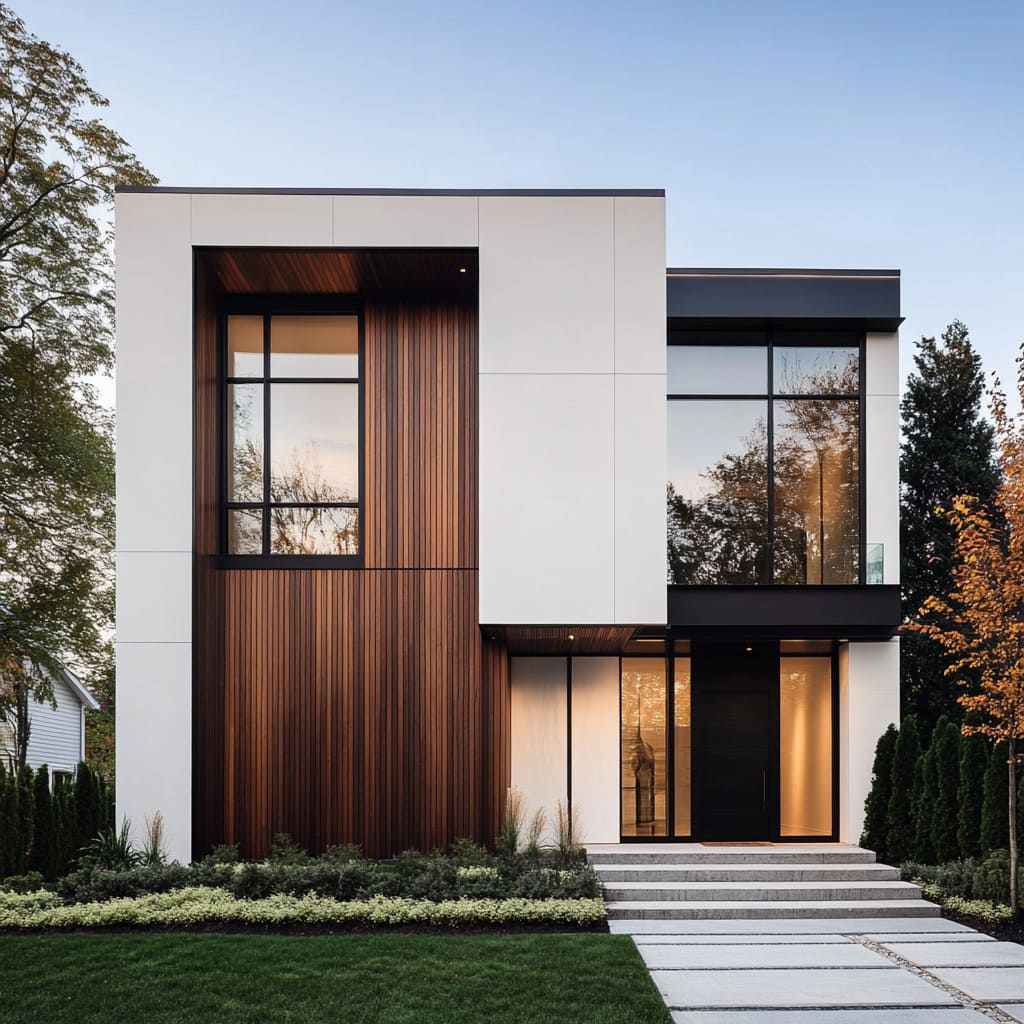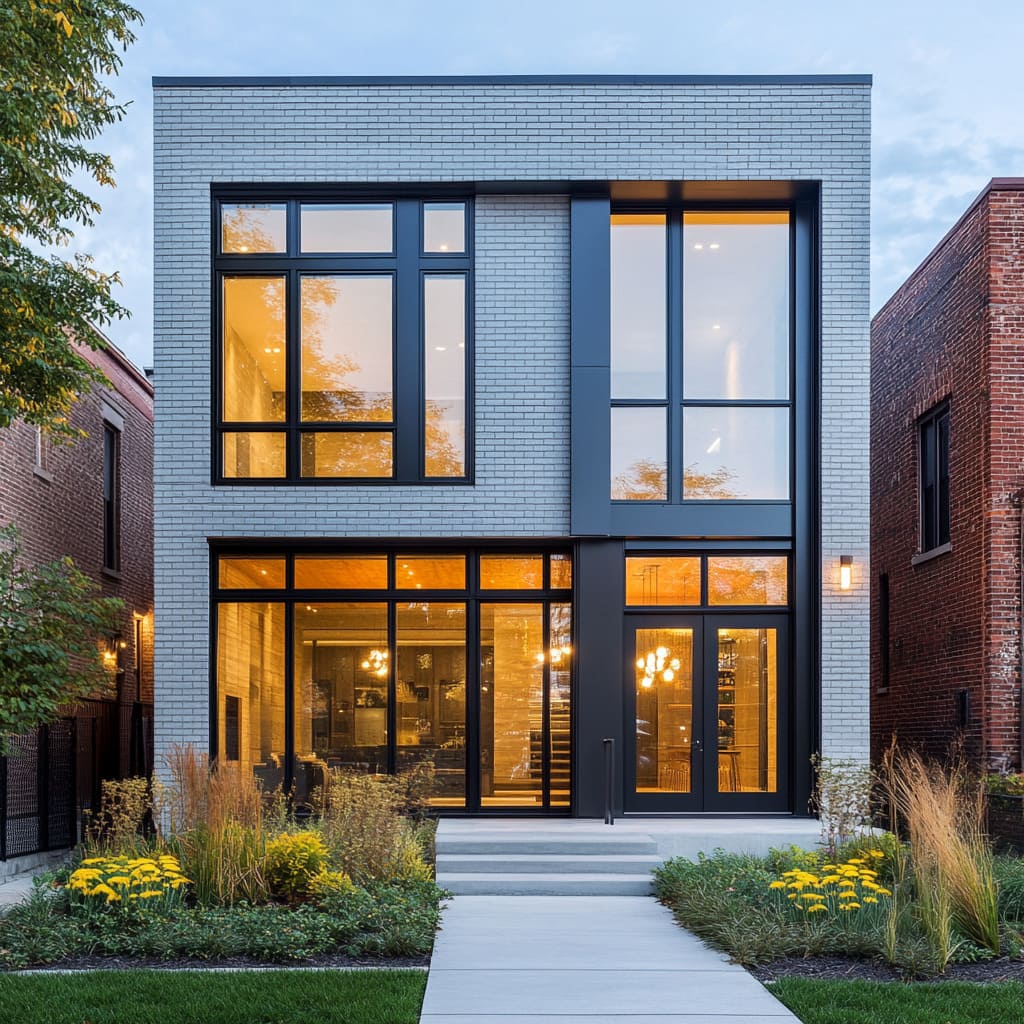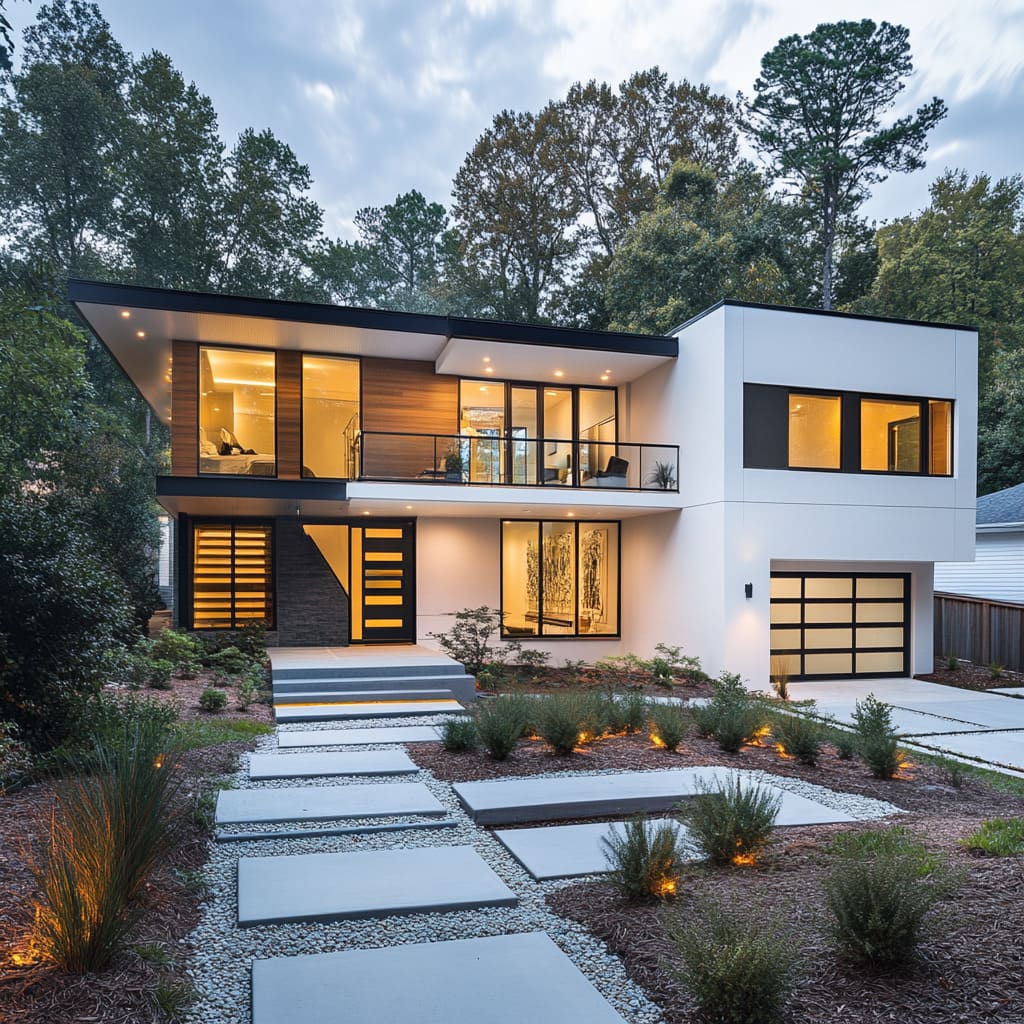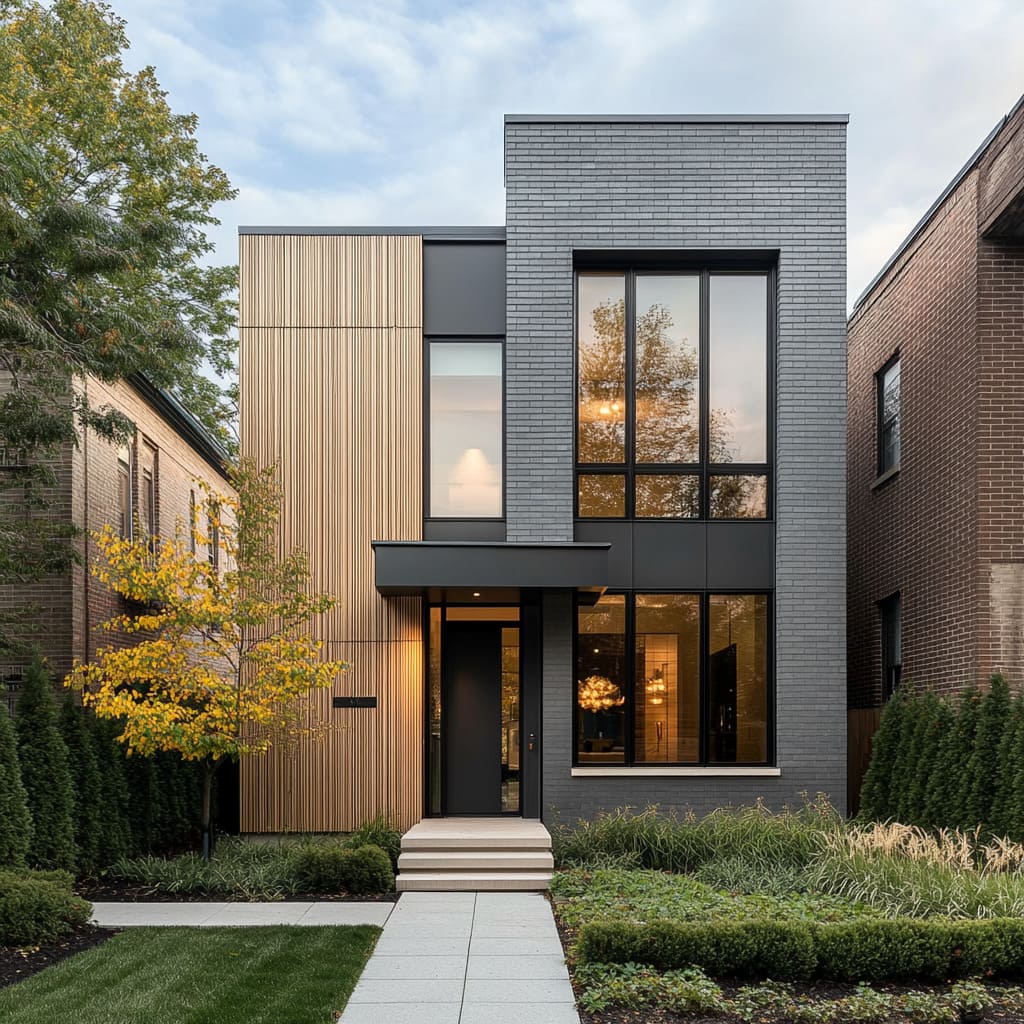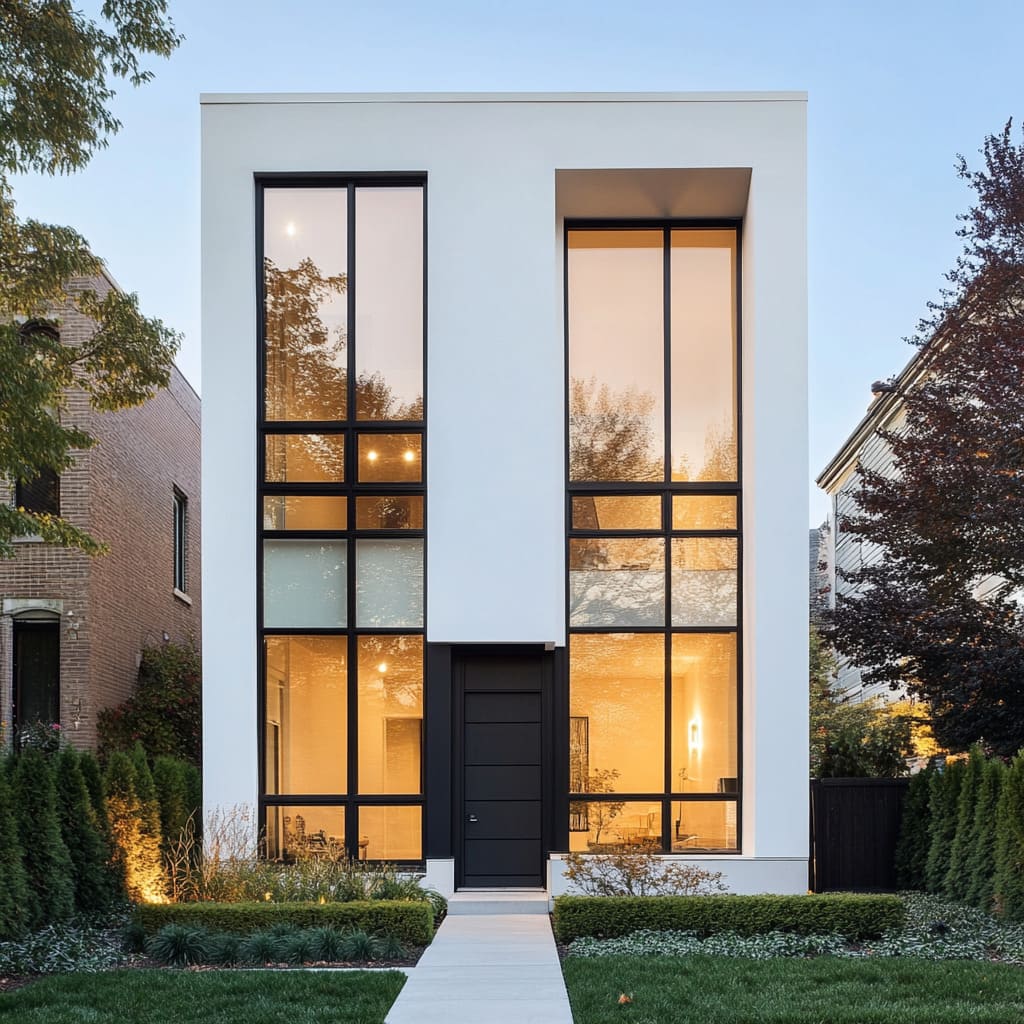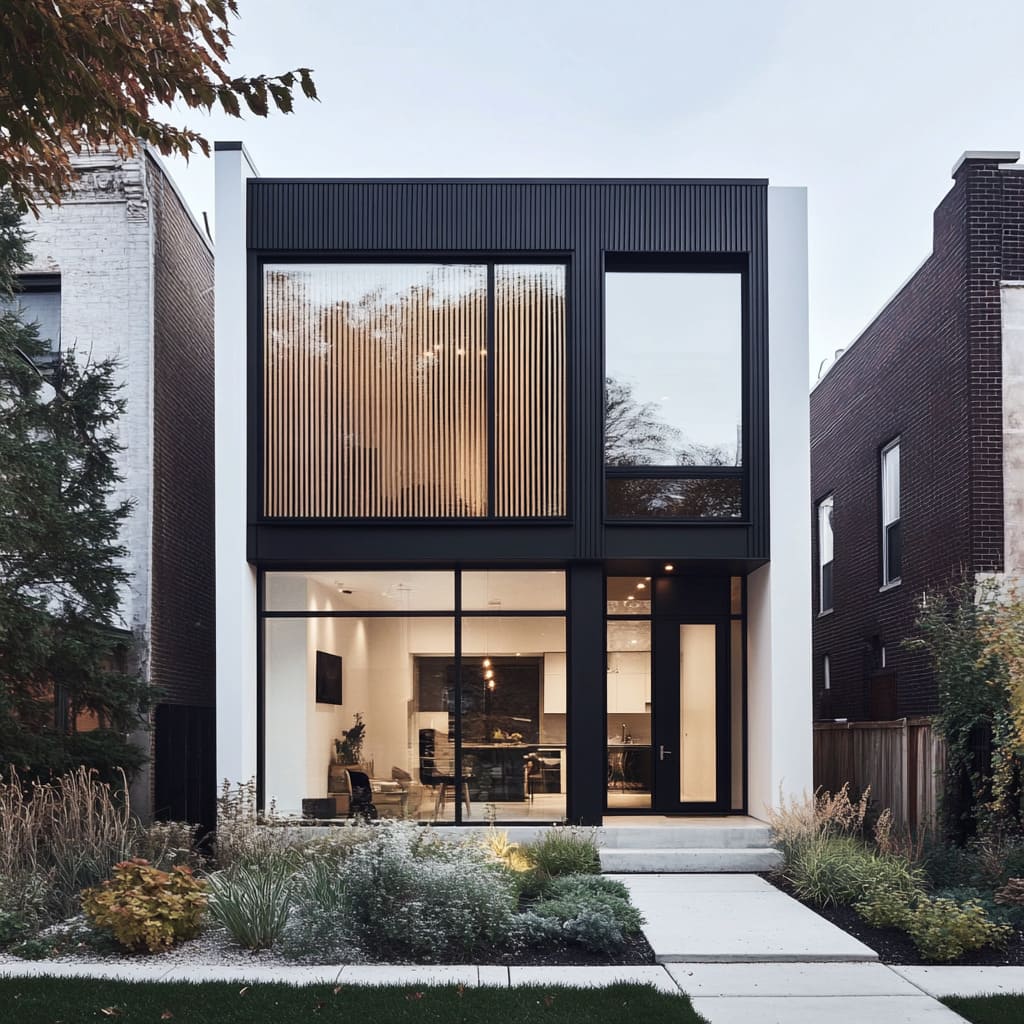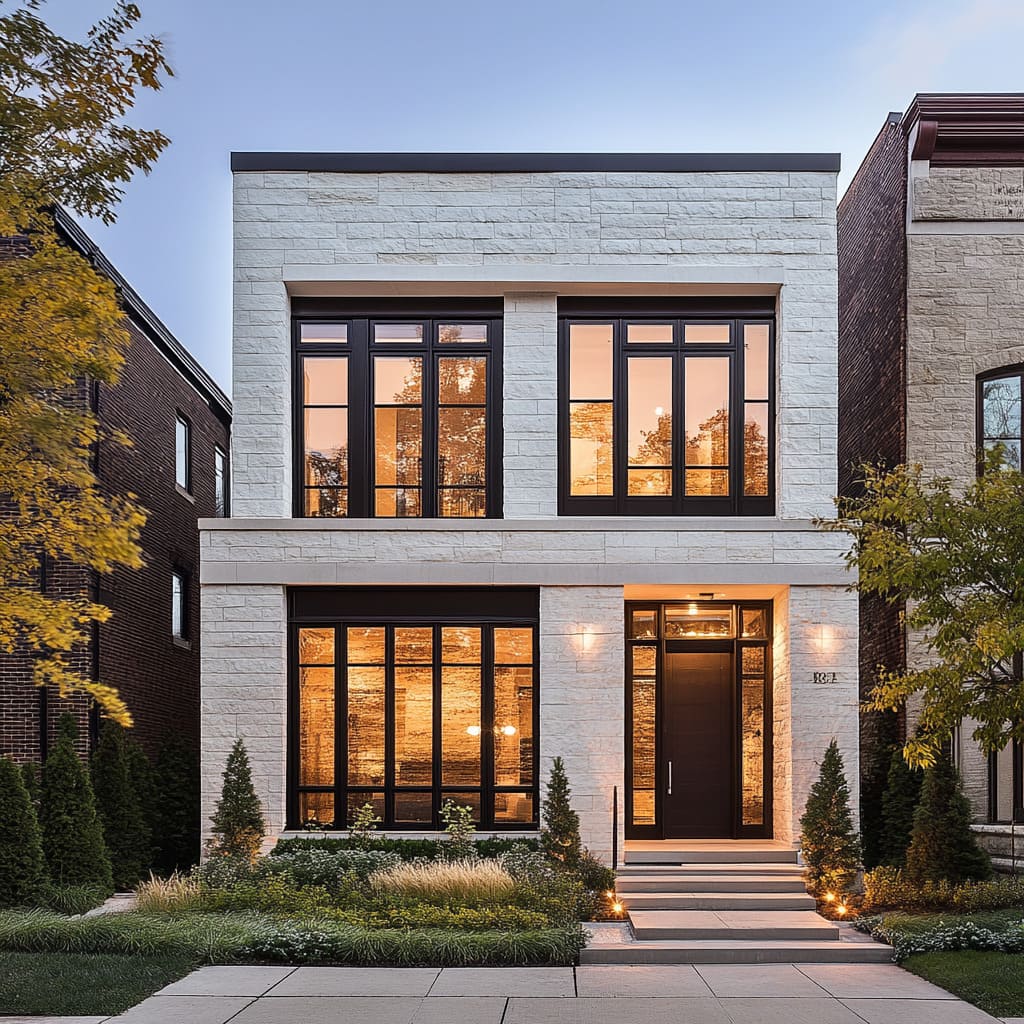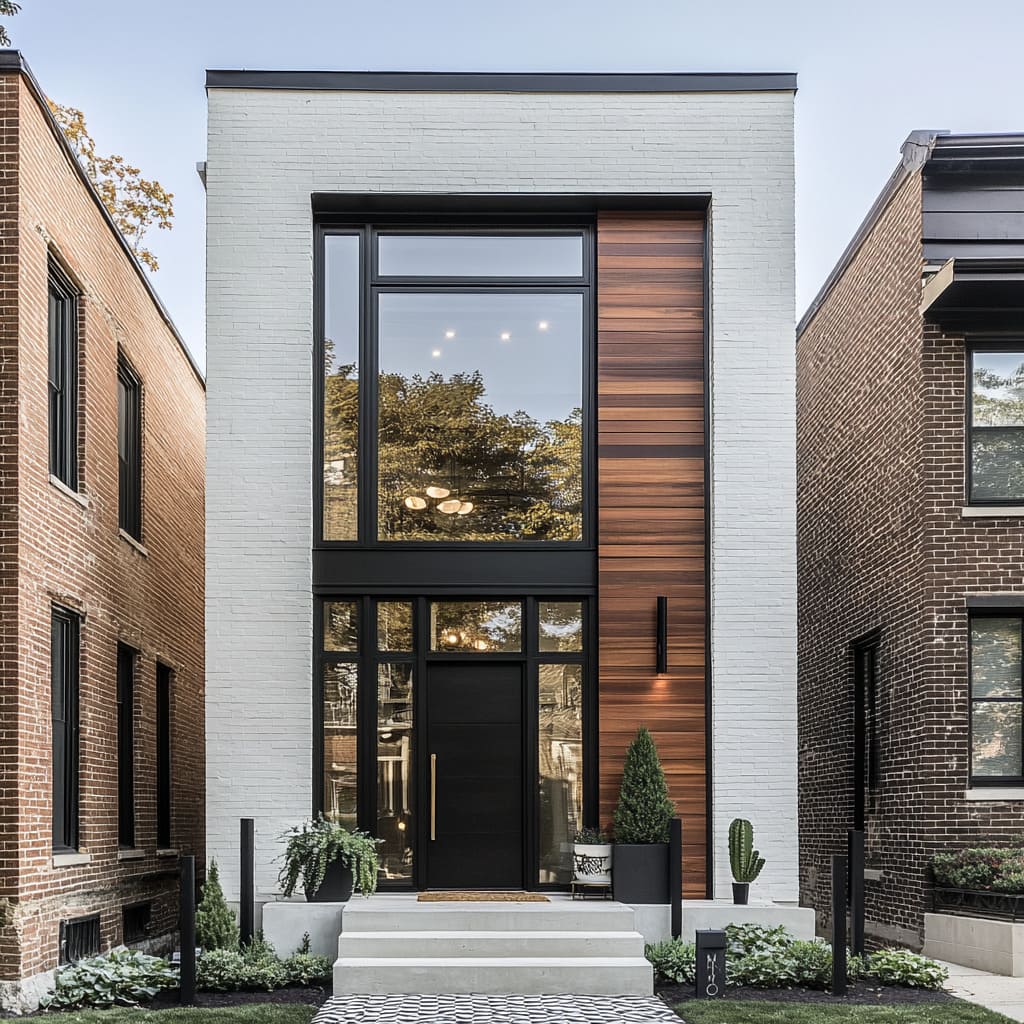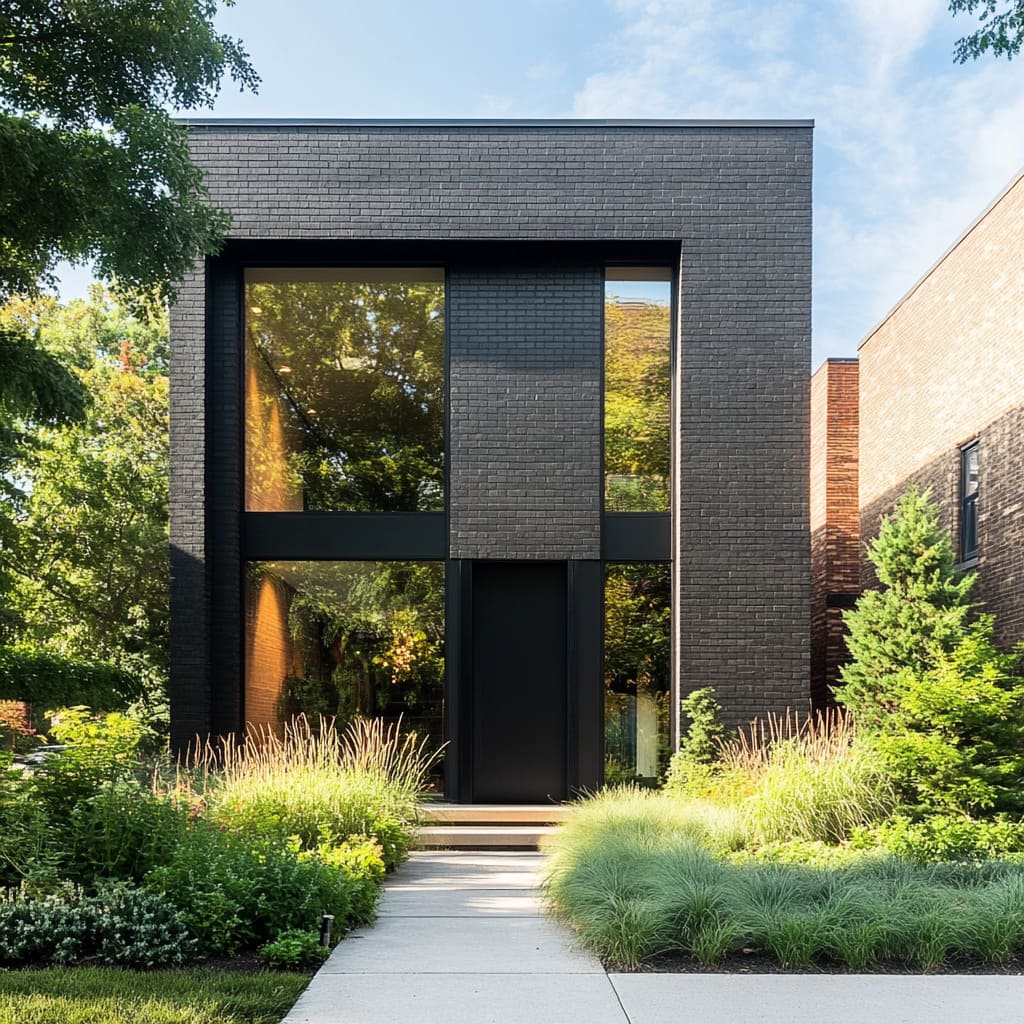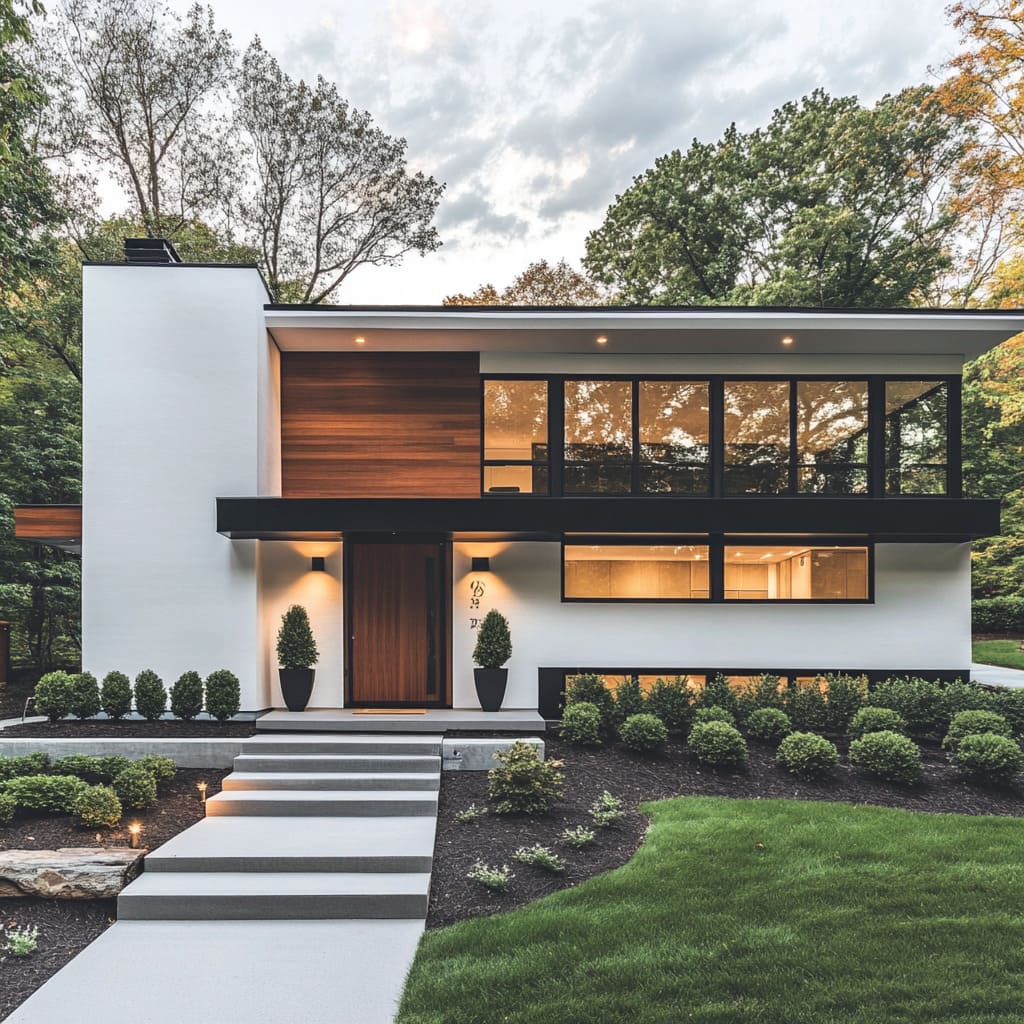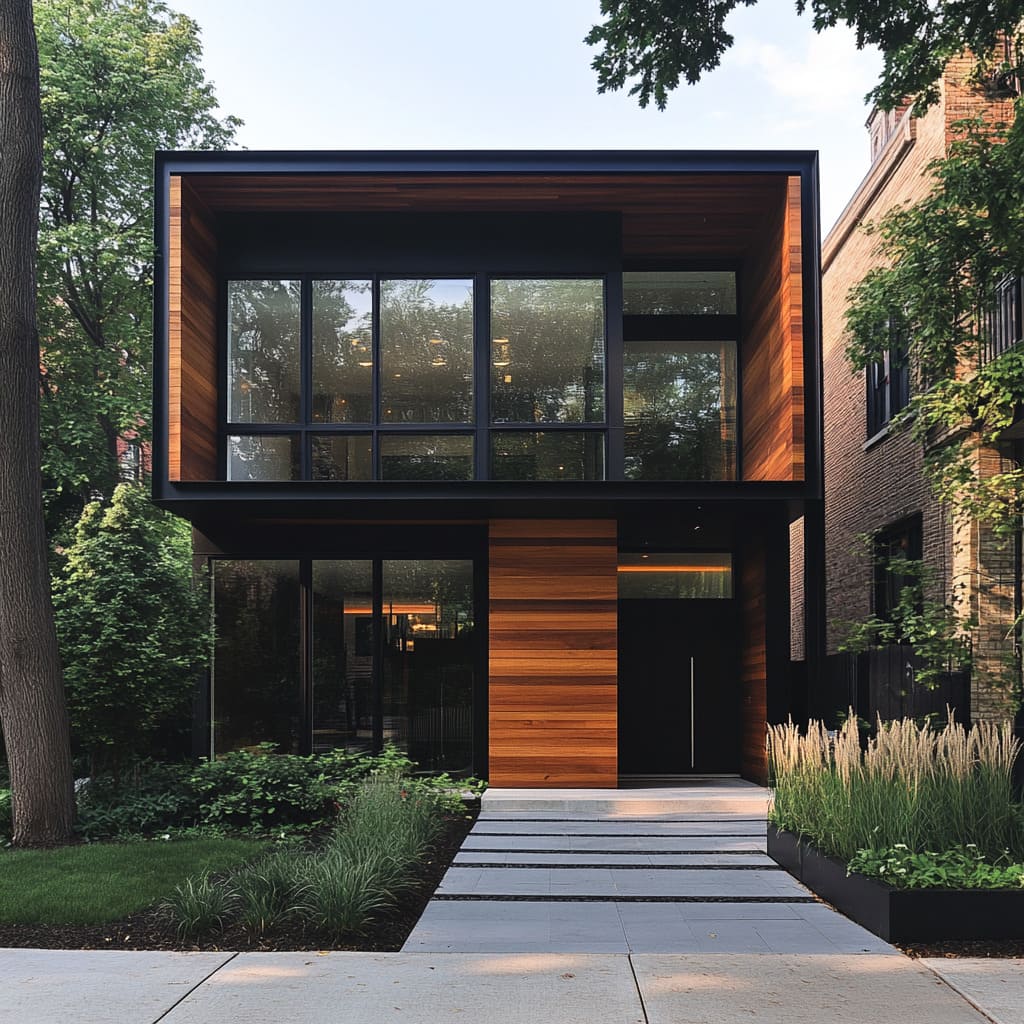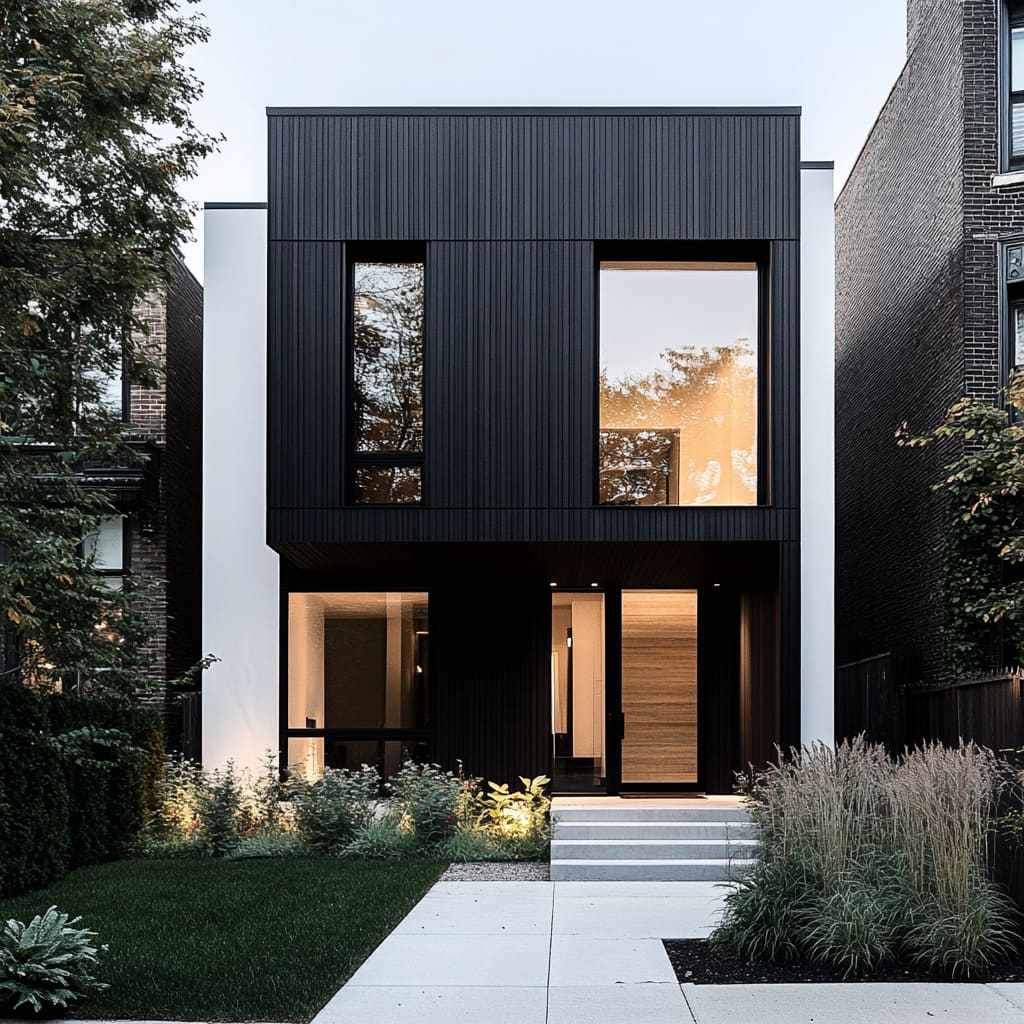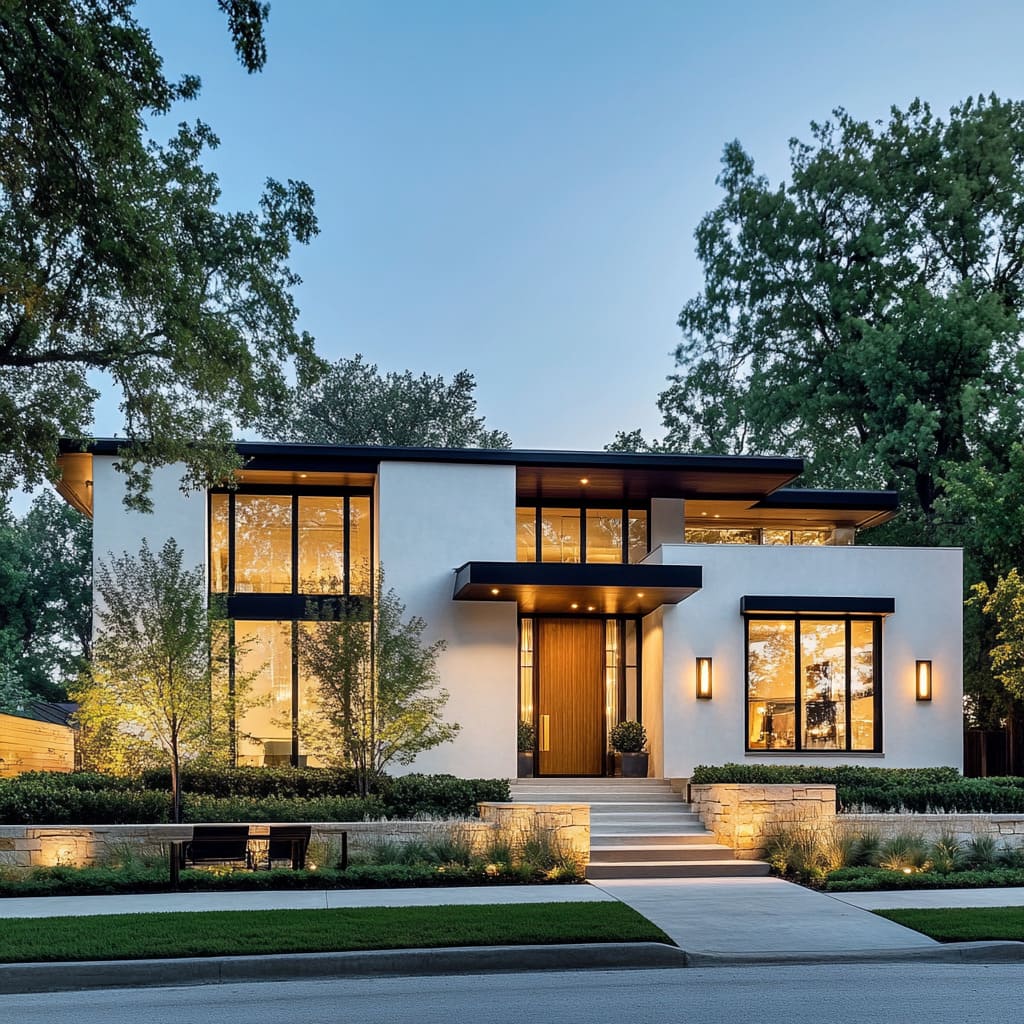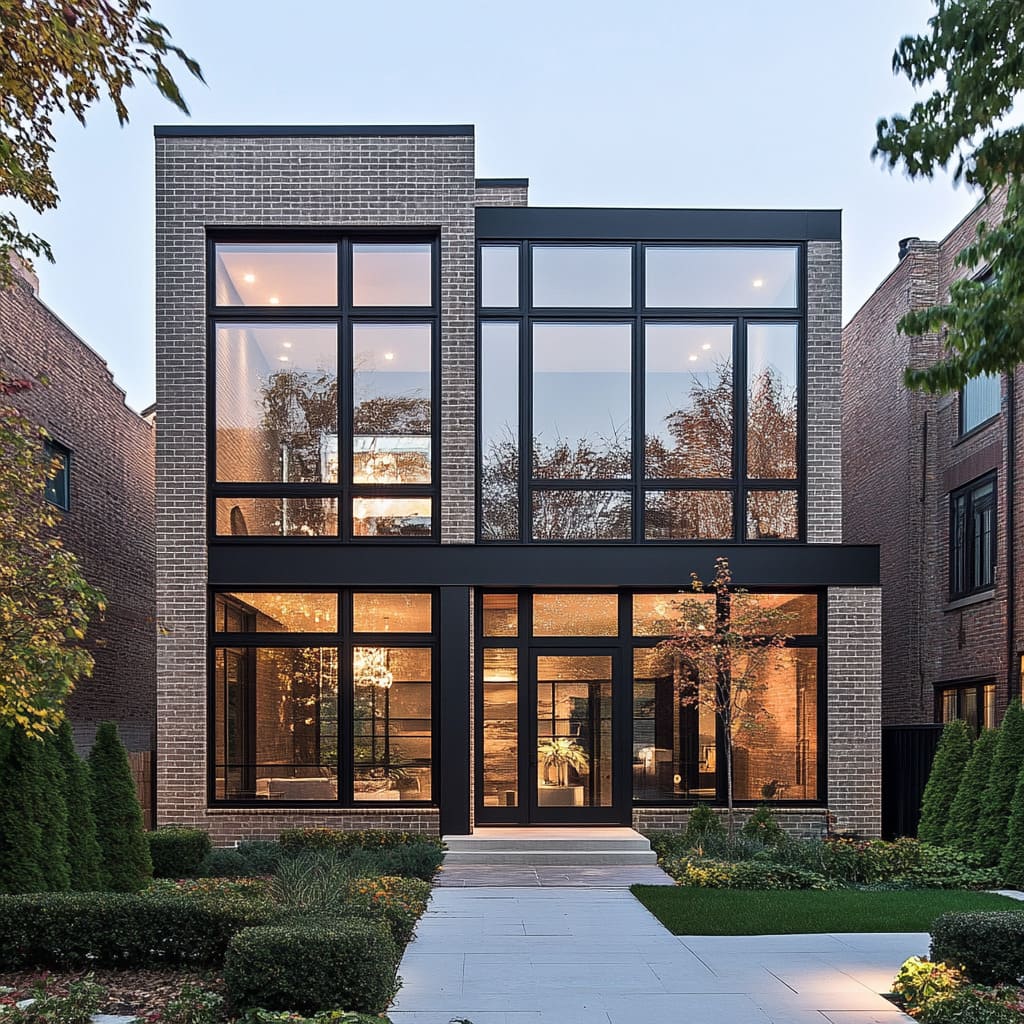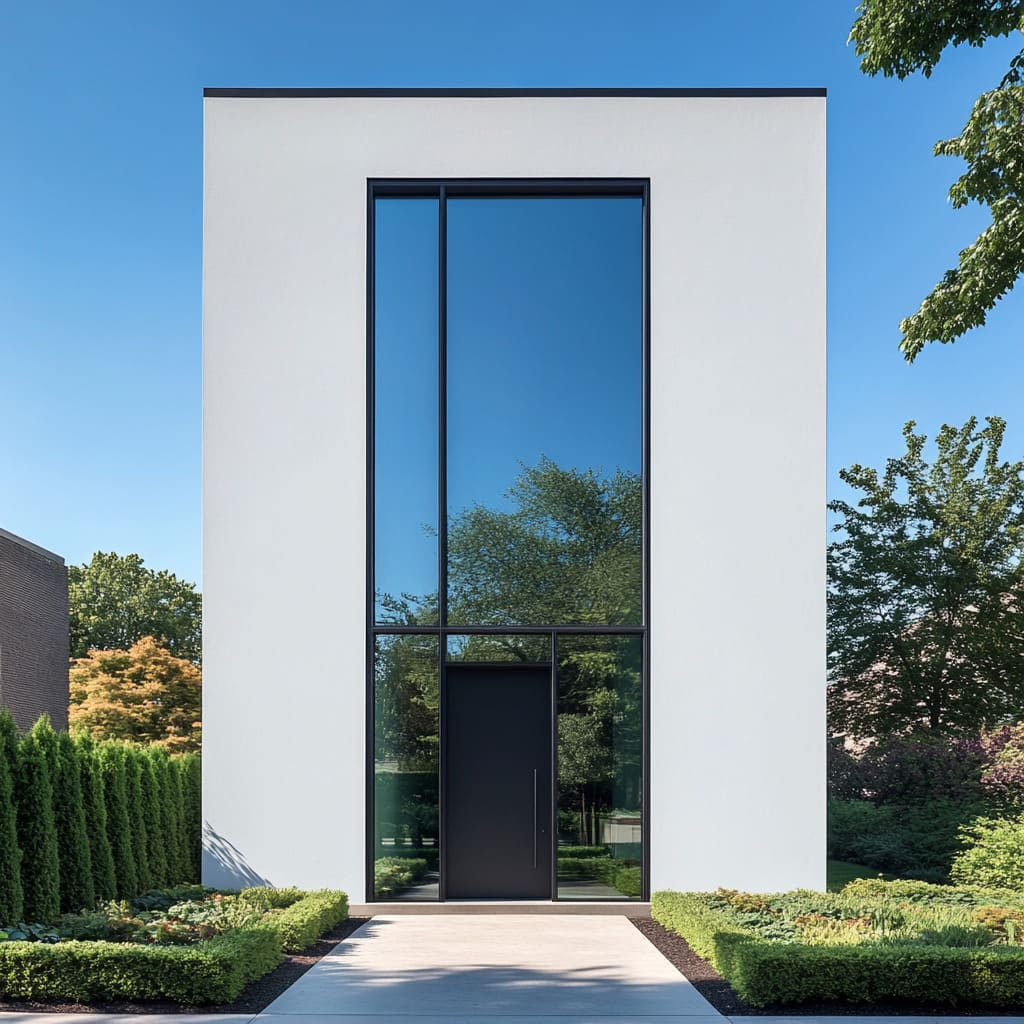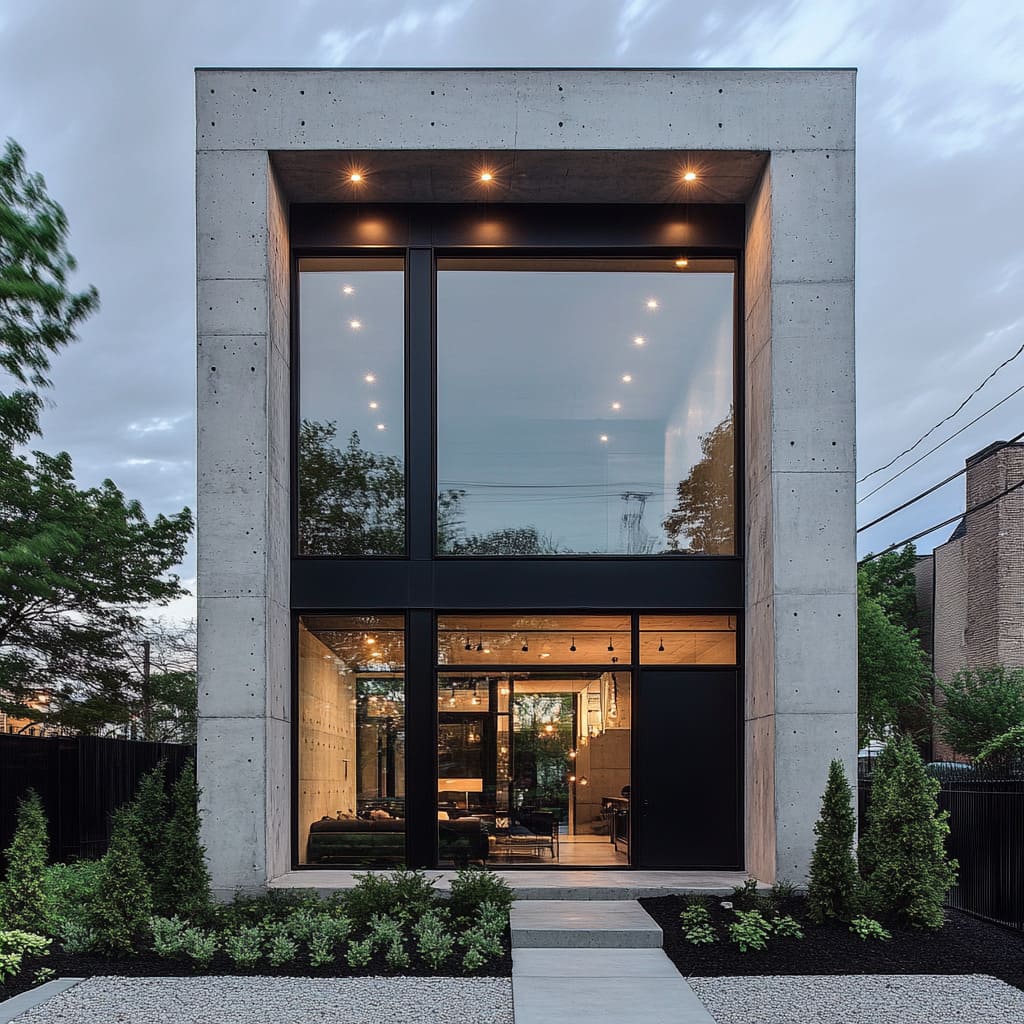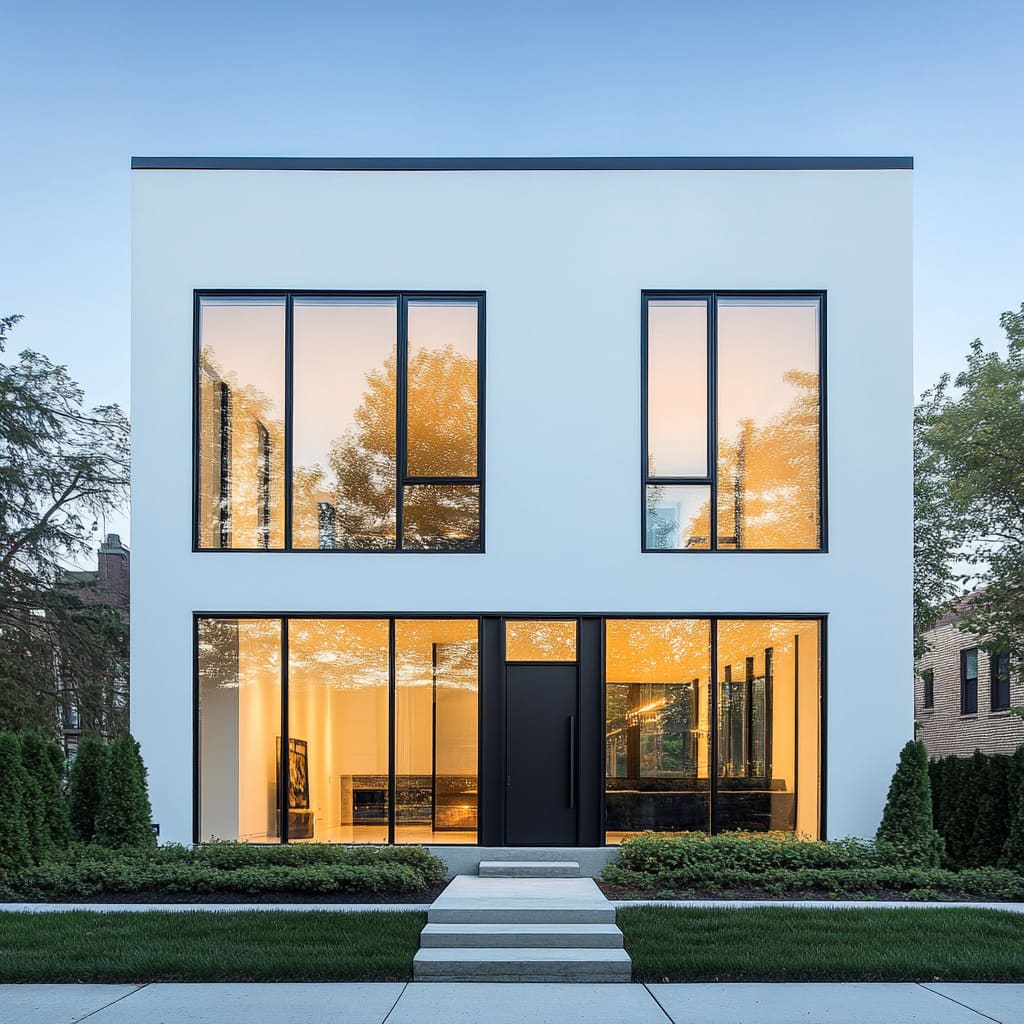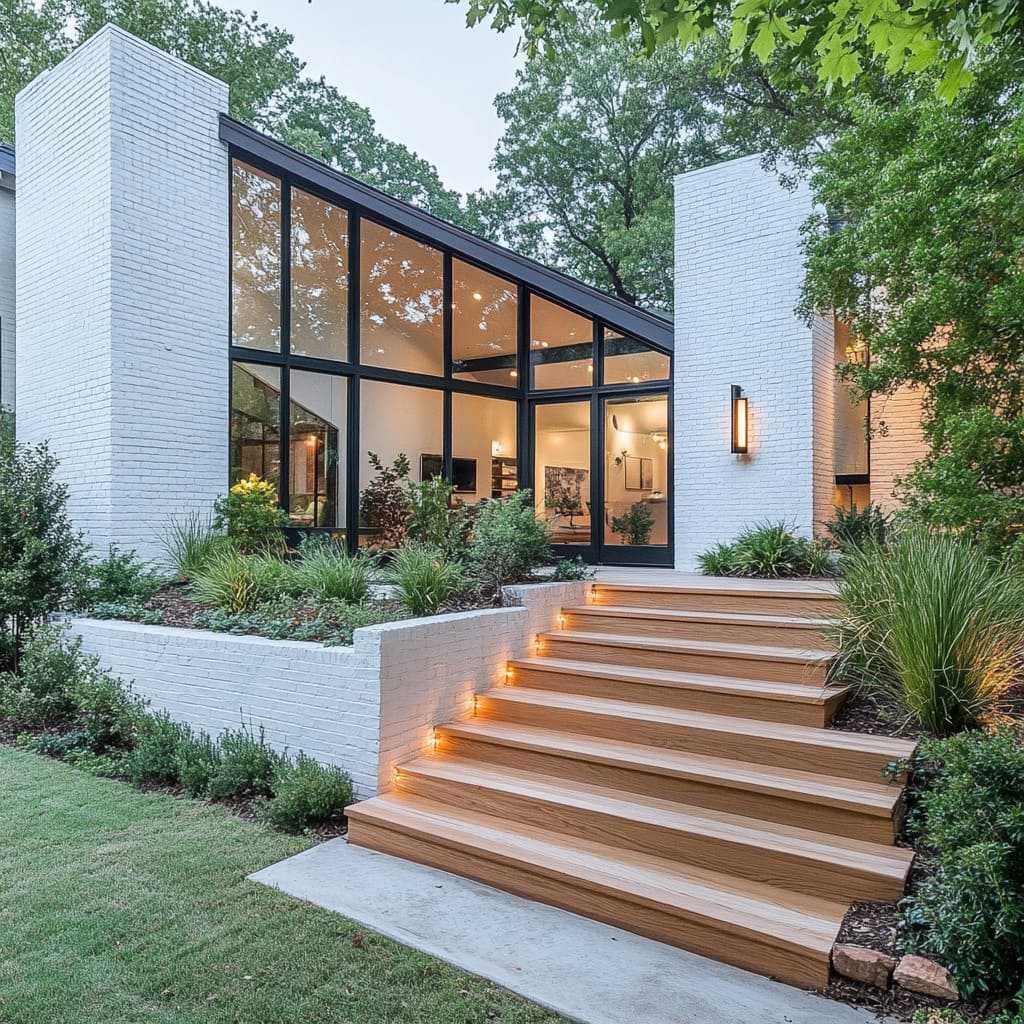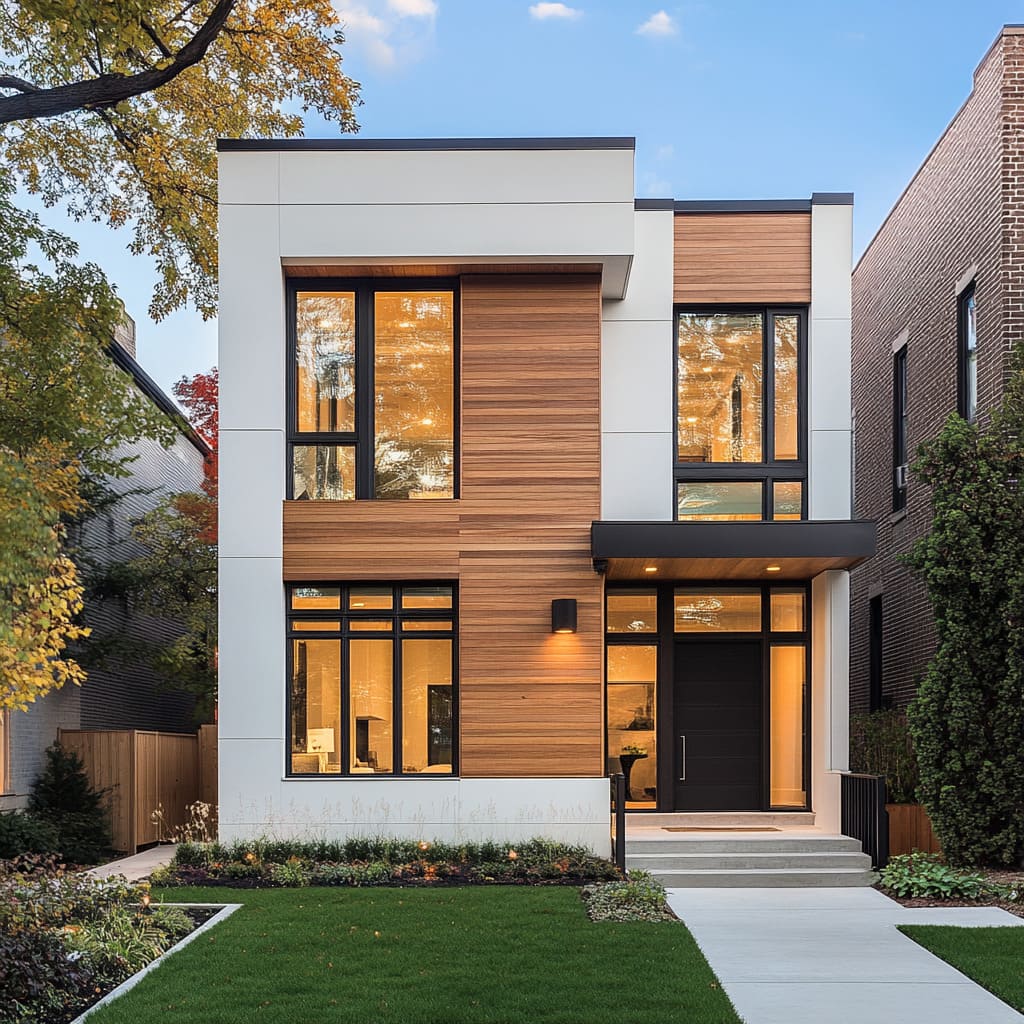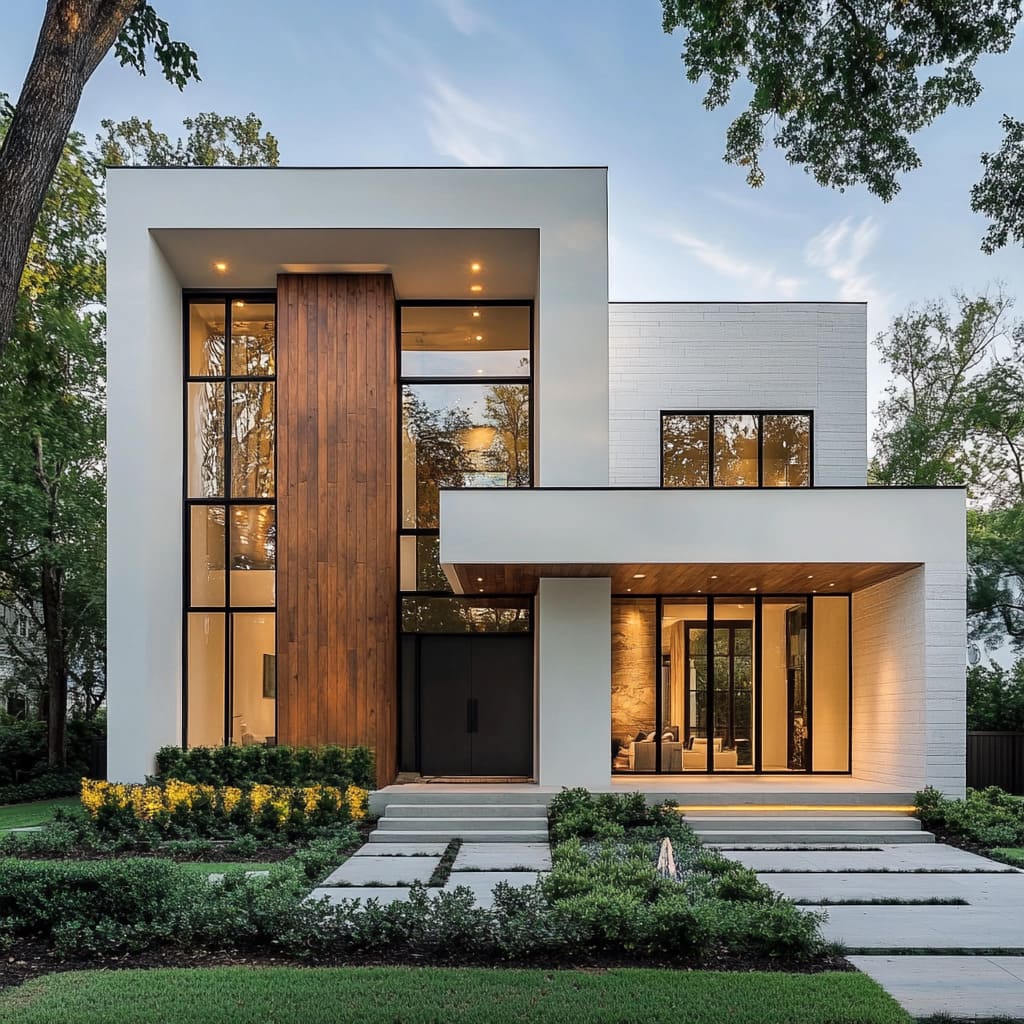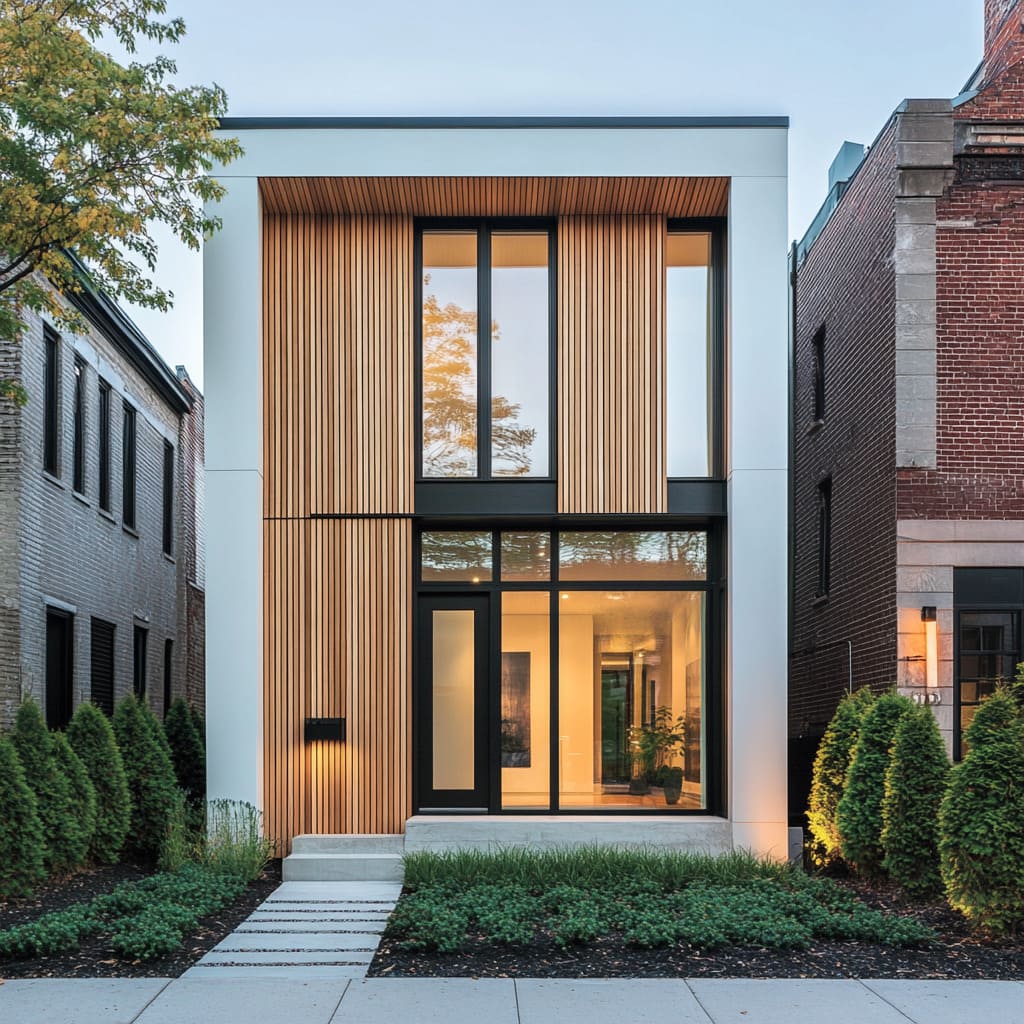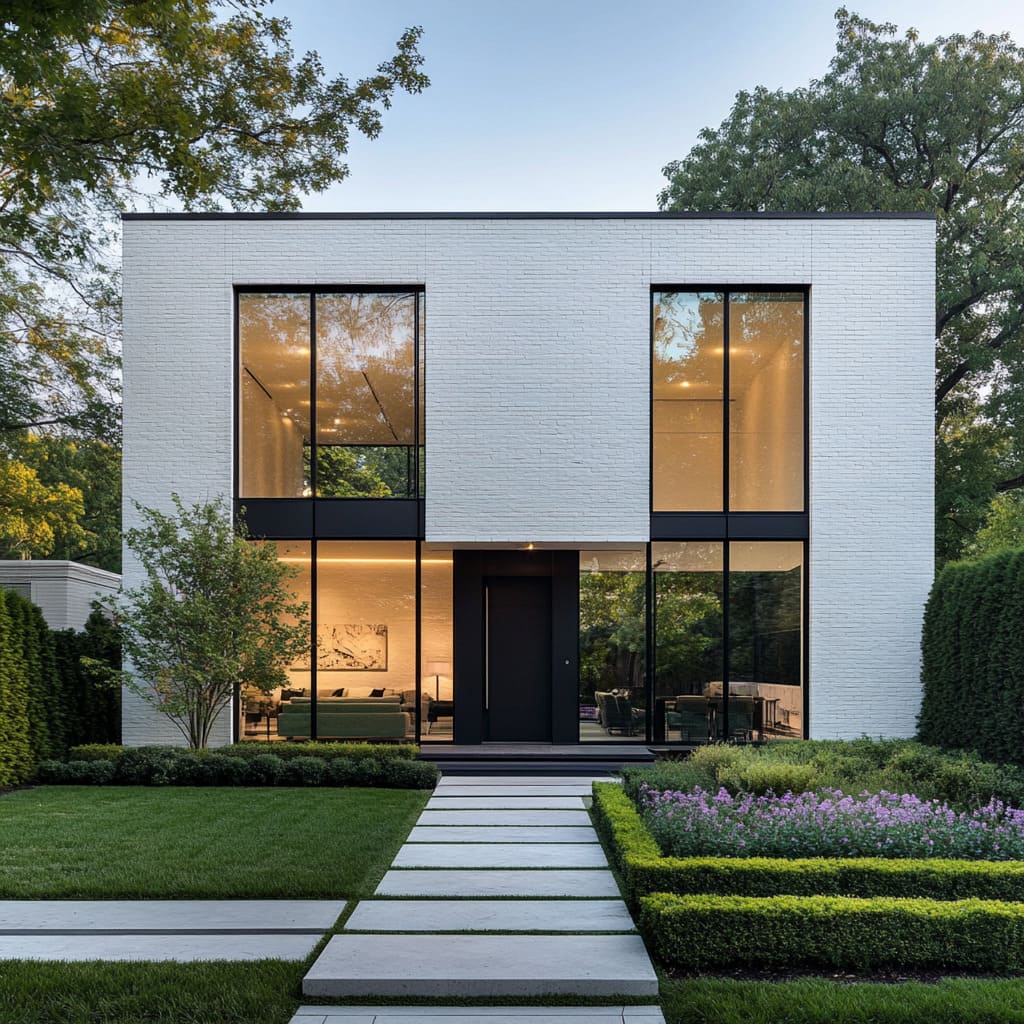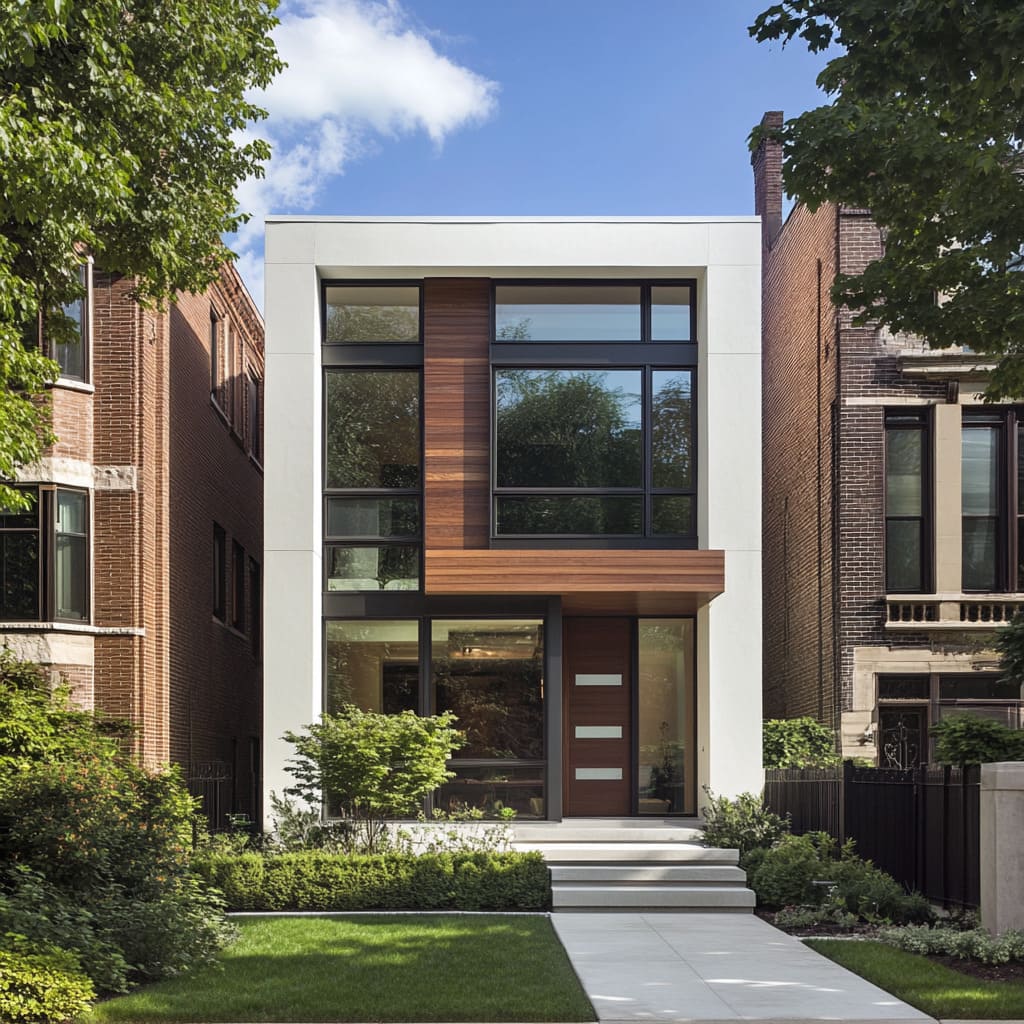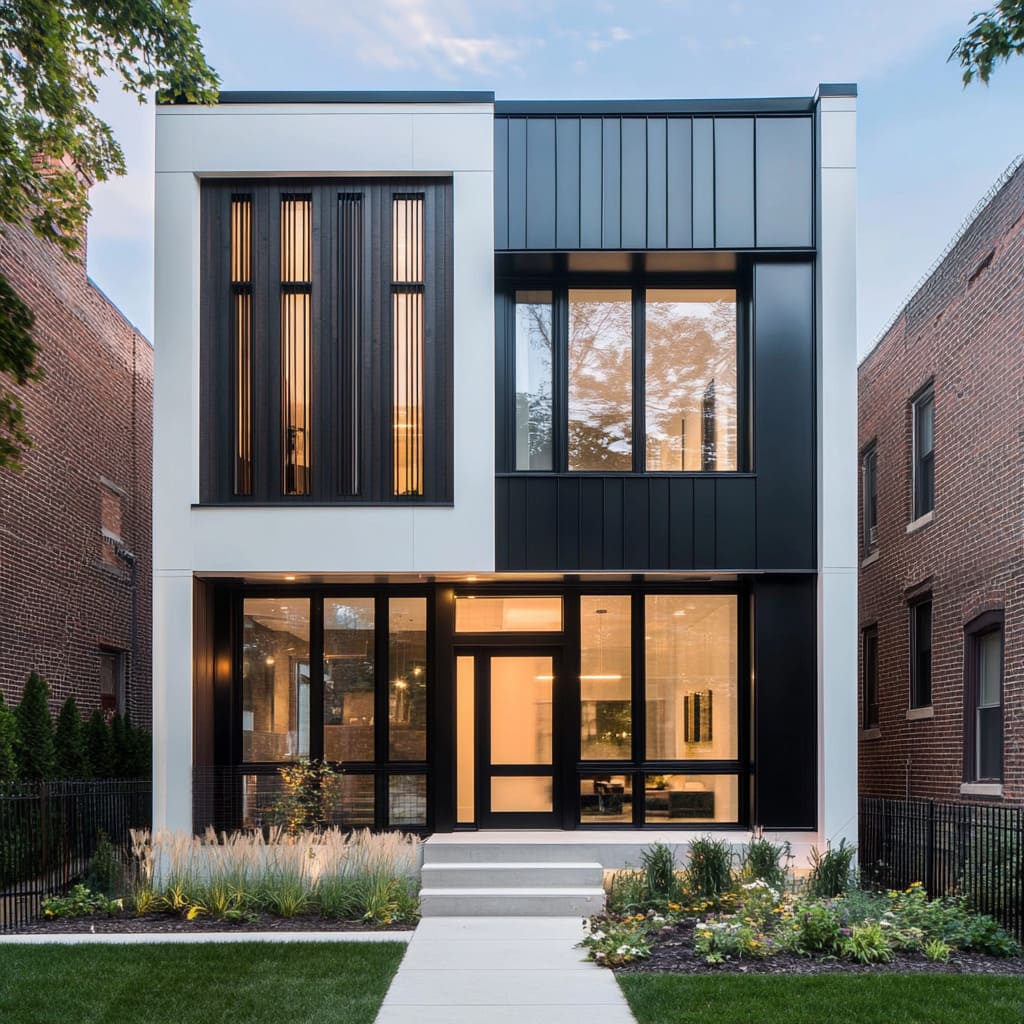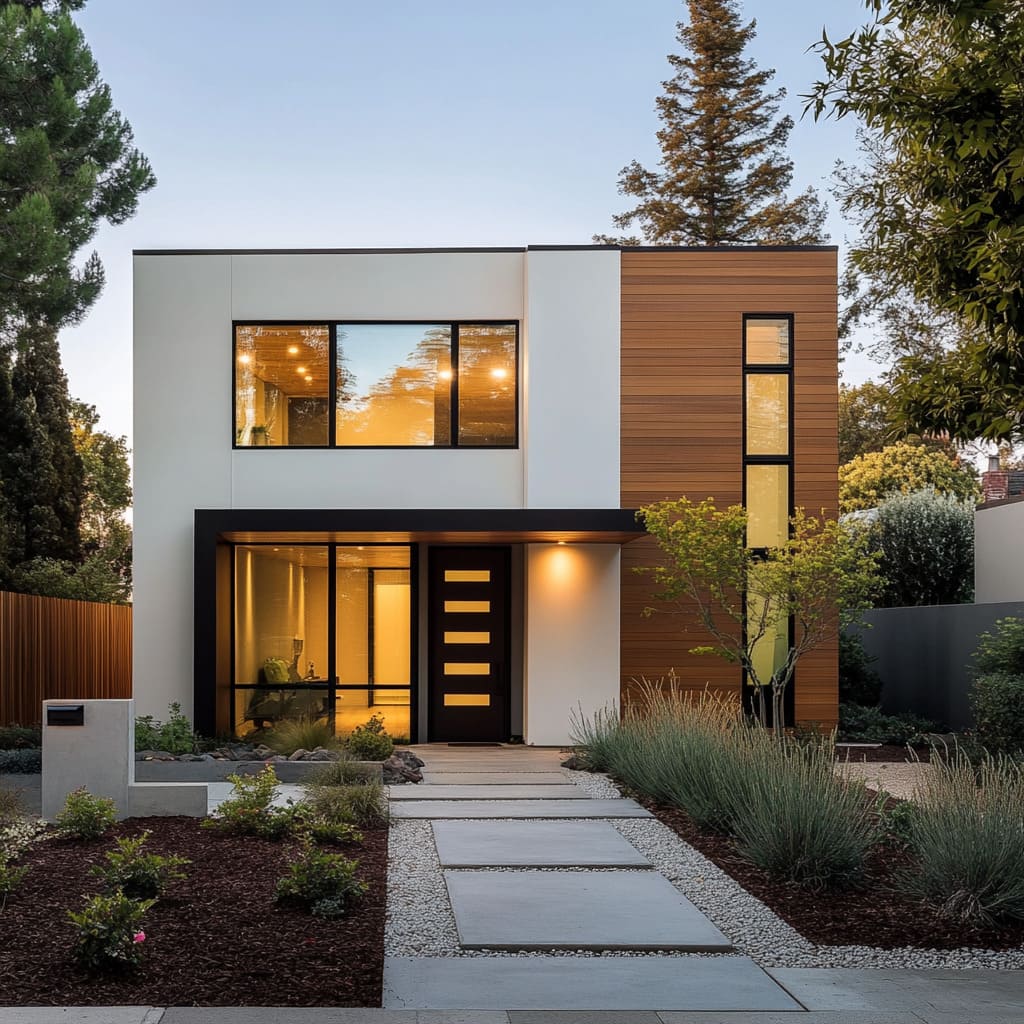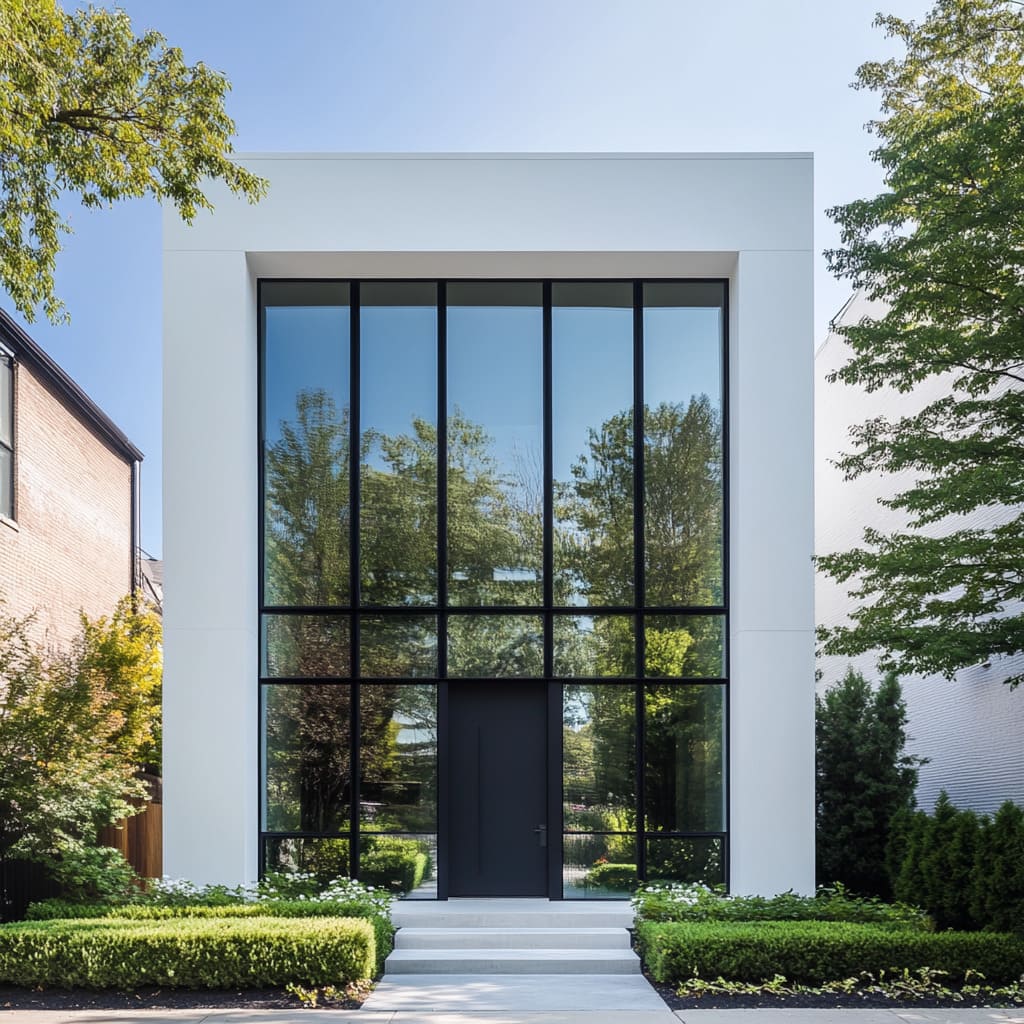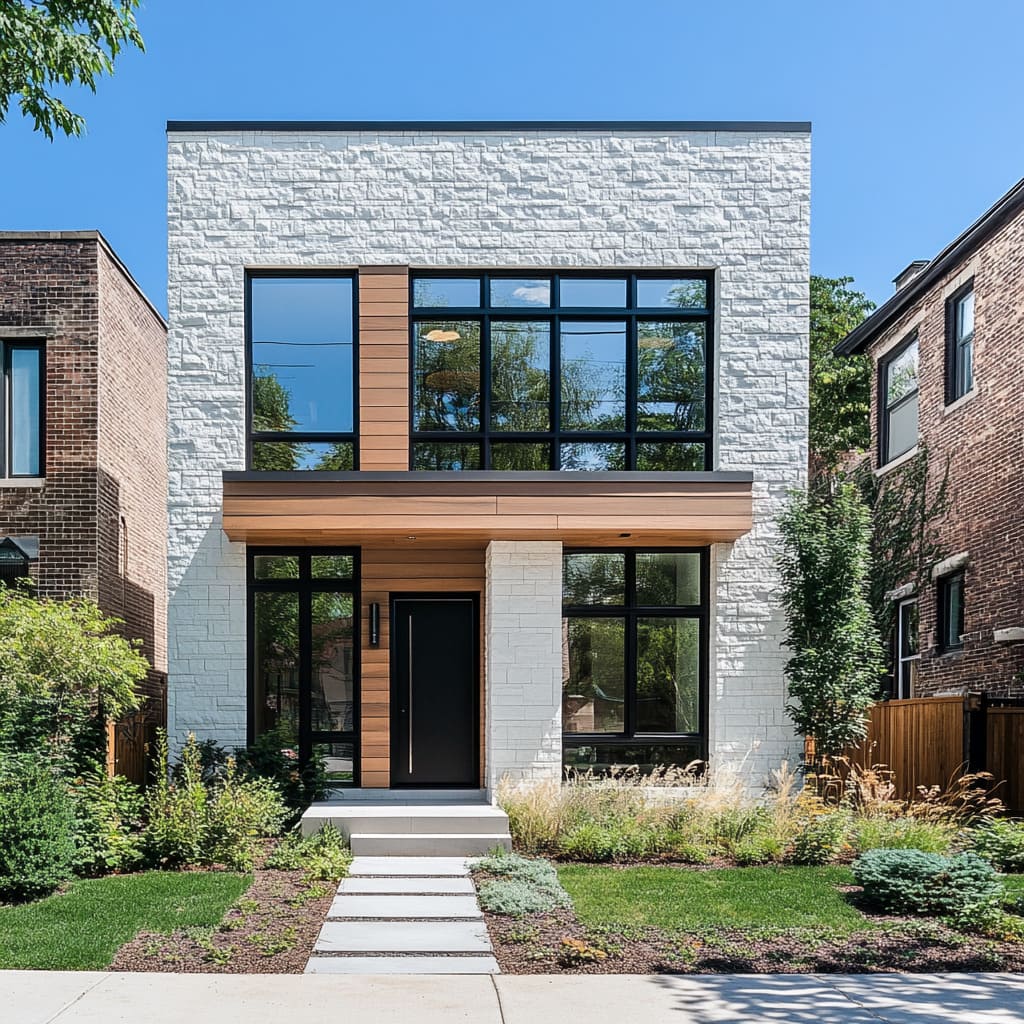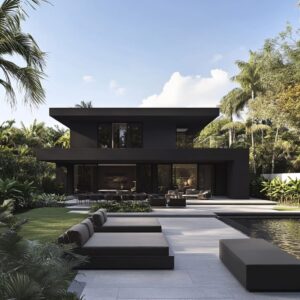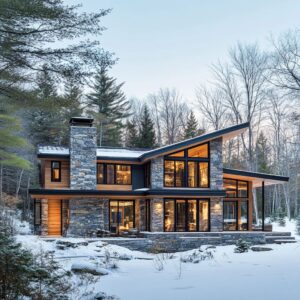In the world of contemporary house design, minimalism has become a defining trend, transforming the way we think about the exterior of homes. Modern minimalist house design is driven by a commitment to simplicity, where each element serves a purpose, and nothing feels excessive.
Homeowners and designers alike are drawn to the clarity of clean lines, functional spaces, and the absence of unnecessary decoration. Beyond the aesthetic appeal, these homes stand out for their practicality, offering a unique combination of low maintenance and energy efficiency
One of the key reasons this style is gaining popularity is the growing focus on sustainability. Modern construction practices emphasize eco-friendly materials and designs that contribute to lower energy consumption, all while minimizing the time and effort required for upkeep.
Additionally, 2 storey modern minimalist house designs offer a sense of grandeur and space without relying on overly complicated forms or extravagant details. Instead, the boldness comes from the simplicity itself — the beauty lies in the structure’s pure form and thoughtful use of materials.
In this article, we’ll explore the various aspects of bold minimalist exteriors, highlighting how they embody simplicity, functionality, and eco-conscious design. From the careful choice of materials to the strategic use of large glass panels, these homes are not just visually striking but also practical, cost-effective, and environmentally sound
The Appeal of Bold Minimalist Design
The Core Principles of Minimalist Architecture
Minimalist architecture revolves around the idea that less is more. At the heart of this design philosophy is a focus on clean, sharp lines, open spaces, and a form that follows function.
There is no place for excess here; instead, each feature of the home is carefully selected for its purpose. The simplicity of these exteriors creates a sense of order and balance, where the home’s form is stripped down to its essentials.
This results in designs that feel open, breathable, and unburdened by the clutter of traditional decorative elements. The design approach also ensures that every feature has a functional role to play, making maintenance simpler.
With fewer ornamental elements to worry about, the upkeep of a minimalist home becomes more straightforward. Durable, long-lasting materials are often chosen to complement the simplicity of the form, ensuring the house ages gracefully without requiring constant attention
The Bold Statement of Contrast
One of the most striking elements in modern minimalist house design is the clever use of contrast. This often comes to life through the combination of different materials, such as pairing light-colored facades with bold, black metal frames.
The sharp juxtaposition between these materials adds depth and visual interest to an otherwise straightforward structure, proving that minimalism does not have to be dull. By keeping the palette neutral but contrasting, minimalist exteriors can make a bold statement without relying on intricate detailing or excessive color
Another way minimalist homes achieve boldness is through the use of large, expansive glass windows. These transparent elements allow natural light to flood the interior, providing a sense of openness and connection to the outdoors.
The interplay between the solid walls and transparent glass panels creates a dynamic balance. It also serves a functional purpose by enhancing the energy efficiency of the home.
By strategically placing these windows, designers make a modern minimalist home feel larger and more integrated with its surroundings, all while reducing the need for artificial lighting. In minimalist architecture, the boldness often lies in what is left out.
By removing the unnecessary and emphasizing the essential, these homes can achieve a striking visual presence. The thoughtful use of materials, combined with clever design choices like large windows, results in homes that are both practical and visually impactful
Facade Materials: Durability Meets Aesthetics
The choice of facade materials is crucial in modern minimalist designs. Beyond just the visual impact, these materials must stand the test of time, resisting the elements and requiring minimal maintenance.
Bold modern exteriors embrace materials that are both durable and aesthetically refined, creating homes that are as functional as they are striking
The Use of Concrete for Industrial Minimalism
Exposed concrete has become a hallmark of industrial minimalism, offering both strength and resilience. This material is especially valued for its durability, able to withstand harsh weather conditions, from extreme heat to heavy rain, without compromising its structural integrity.
Its raw, unpolished appearance gives homes a rugged, modern edge, blending effortlessly into urban and natural settings alike. The beauty of concrete lies in its ability to deliver a bold, powerful look while requiring very little upkeep over time.
Concrete is particularly well-suited for beach house minimalist design as it resists corrosion from salt air and heavy winds often found in coastal environments. In urban settings, it adds a raw, almost sculptural aesthetic that pairs beautifully with minimalist design principles.
Furthermore, concrete’s thermal mass properties help regulate internal temperatures, making it energy-efficient by nature. This low-maintenance, tough material is perfect for homeowners who value longevity without the burden of regular upkeep
Natural Stone Cladding for Textured Minimalism
Natural stone offers a balance between ruggedness and sophistication, making it a favorite in minimalist designs that aim to blend modern aesthetics with earthy elements. When paired with clean, geometric forms, natural stone cladding provides an understated texture that elevates the design without overwhelming it.
The result is a contemporary look that feels timeless and grounded
Stone is also eco-friendly, offering excellent insulation that helps maintain indoor temperature, reducing the need for excessive heating or cooling. Its durability means that once installed, stone requires little to no maintenance, unlike other facade options that might degrade over time.
The stone’s organic quality also complements landscapes beautifully, giving minimalist homes a natural connection to their surroundings. This makes it an ideal choice for both urban settings and homes set in more rural or wooded environments.
The combination of stone and modern design creates a minimalist 2 storey house design that feels sophisticated and warm, perfect for those who appreciate a subtle mix of textures and materials. The thermal insulation properties of stone further enhance the home’s energy efficiency, ensuring comfort without a high environmental cost
Brick and Stucco: A Blend of Tradition and Modernity
Brick has long been a go-to material in home construction, and in minimalist design, it has found new life. Its earthy texture adds warmth to otherwise stark designs, offering a tactile contrast to sleek surfaces like glass or metal.
When used correctly, brick can balance the coolness of modern materials, making a home feel more inviting. In many black and white minimalist house designs, brick plays a key role in grounding the space, providing a subtle texture that doesn’t detract from the overall simplicity of the structure
Stucco, on the other hand, provides a clean, sleek finish that complements the smooth, continuous lines typical of minimalist homes. Its durability and resistance to weather make it a practical choice for homeowners looking to combine beauty with functionality.
Stucco facades offer versatility in color and texture, but when left in natural hues, they serve to enhance the modern, streamlined appearance of a home. In regions prone to harsh weather, stucco holds up well, making it a reliable and low-maintenance option for exteriors
Energy-Efficient Windows: A Key Element in Minimalist Homes
Windows are more than just a source of natural light in minimalist homes; they are an integral part of the design. When used thoughtfully, they can transform a space by connecting the indoors with the outdoors, all while maintaining energy efficiency.
In minimalist exteriors, windows contribute to both form and function, providing light, views, and insulation
Large Windows for Natural Light and Passive Solar Design
One of the most significant advantages of minimalist design is the use of large, uninterrupted windows that allow natural light to flood the home. These expansive glass panels help reduce the need for artificial lighting during the day, lowering energy consumption.
When placed strategically, windows can also support passive solar heating, capturing sunlight during cooler months to naturally warm the interior. This not only improves energy efficiency but also creates a warm, inviting atmosphere without compromising the home’s minimalist aesthetic
Homes with large windows often benefit from reduced electricity bills, as natural light reduces the reliance on artificial sources. Additionally, the incorporation of passive solar design ensures that these homes stay comfortable year-round, without requiring heavy use of heating or cooling systems.
This dual functionality makes large windows a key component of minimalist homes that are both beautiful and environmentally conscious
Double and Triple Glazing for Insulation
Energy efficiency is a critical element in modern minimalist homes, and windows play a significant role in achieving this. Double- and triple-glazed windows provide superior insulation by trapping air between layers of glass, which reduces heat transfer.
This helps keep homes warmer in the winter and cooler in the summer, without putting strain on heating and cooling systems. The use of advanced glazing technologies not only cuts down on energy costs but also enhances the home’s sustainability.
Well-insulated windows reduce the need for mechanical climate control, which in turn lowers the home’s overall carbon footprint. The benefits of energy-efficient glazing extend beyond cost savings, contributing to a greener, more eco-friendly lifestyle for the homeowners
Black Framed Windows: Minimalist Yet Bold
Black-framed windows have become synonymous with modern minimalist design, offering a striking contrast to light-colored exteriors. These slim frames, often made from powder-coated metal, are both durable and visually appealing.
The starkness of the black frames highlights the crisp lines of the house, making them a key feature in homes designed for simplicity and elegance. In addition to their aesthetic impact, black metal window frames are highly practical.
The powder-coating ensures they are resistant to rust and corrosion, making them a low-maintenance option for long-term use. Whether it’s a minimalist 2-storey house or a single-floor design, black frames add an element of boldness while staying true to minimalist values, where functionality and form work hand in hand
Roofing: Sleek and Sustainable
The roof plays a significant role in defining the aesthetic and functionality of modern style house designs, especially in minimalist architecture where simplicity and practicality are prioritized. Flat roofs have become a favored choice in these designs, offering both visual and functional benefits.
They provide a sleek, streamlined look that pairs well with the clean lines of minimalist homes while offering sustainable opportunities, like solar energy integration, to make homes more eco-friendly
Flat Roof Design for Minimalist Homes
Flat roofs perfectly complement the minimalist aesthetic. Their clean, unadorned look enhances the overall geometric precision of a home, creating an effortlessly modern silhouette.
The flat design emphasizes simplicity, ensuring that the home’s focus remains on its shape and materials rather than on complex roofing structures
Beyond aesthetics, flat roofs offer practical advantages. They are typically more cost-effective to build and maintain compared to traditional pitched roofs.
The simplicity of their construction requires fewer materials, making them a more affordable option, especially for larger homes like 2 storey contemporary house designs. Maintenance is also significantly easier with flat roofs, as there are no complex angles or shingles that require regular inspection or repairs.
These roofs offer a long-lasting solution with minimal upkeep, perfectly aligning with the low-maintenance goals of modern minimalist architecture
Potential for Solar Integration
Flat roofs present a unique advantage for homeowners interested in sustainability. Their broad, unobstructed surface is ideal for installing solar panels, making the most of the sun’s exposure throughout the day.
Solar panels are an excellent way to reduce a home’s reliance on traditional energy sources, and flat roofs simplify the installation process by providing ample space and optimal angles for panel positioning
The environmental benefits of solar energy are significant. By using solar power, homeowners can dramatically cut down on their carbon footprint, contributing to a greener planet.
But the benefits extend beyond the environmental impact—there are also clear financial advantages. Solar energy reduces energy bills over time, providing substantial savings, especially in ultra modern houses where large windows and open spaces may increase heating and cooling demands.
The combination of a flat roof and solar integration creates a home that is not only modern in design but forward-thinking in terms of energy efficiency
Low-Maintenance Modern Homes
In minimalist home design, the outdoor space is just as important as the structure itself. Modern homes often feature simple, clean landscaping that reflects the architectural design.
Low-maintenance gardens and thoughtful landscaping ensure that the beauty of the home extends outdoors without requiring excessive upkeep. The focus is on sustainability and practicality, with a minimalist approach to plant selection and design
Minimalist Landscaping with Gravel and Concrete Pathways
Concrete pathways and gravel beds have become staples in the landscaping of minimalist homes. Their geometric precision mirrors the architectural lines of the house, creating a seamless transition between the home and its surroundings.
Wide, rectangular slabs of concrete provide a clean, organized path to the home’s entrance, complementing the structured look of minimalist exteriors. Gravel, on the other hand, offers an attractive, low-maintenance alternative to traditional lawns or flower beds.
It doesn’t require irrigation, making it both a cost-effective and eco-friendly choice. Gravel beds also provide excellent drainage, reducing the risk of water pooling or erosion around the home’s foundation.
This practical, long-lasting solution ensures the landscaping remains clean and well-organized with little effort, enhancing the home’s modern appeal. The simplicity of gravel and concrete pathways is especially suited to modern style house designs, where ease of maintenance and functionality are as important as aesthetics
Native Plants and Drought-Tolerant Grasses
Minimalist landscaping is about more than just aesthetics; it’s also about sustainability. Native plants and drought-tolerant grasses are a natural fit for this approach, offering both beauty and low-maintenance benefits.
These plants require less water, reducing the need for irrigation, which is particularly important in regions prone to drought. Native species are also more resilient to local pests and weather conditions, meaning they can thrive with minimal intervention.
Drought-tolerant grasses and native shrubs complement the stark lines and industrial textures often found in minimalist architecture. The organic shapes and muted colors of these plants balance the sharp, geometric look of the home, softening the overall aesthetic without detracting from the minimalist ethos.
Additionally, using native plants supports local ecosystems, encouraging biodiversity and reducing the environmental impact of the home
Evergreen Shrubs for Year-Round Appeal
For homeowners seeking a landscape that remains visually appealing year-round, evergreen shrubs provide the perfect solution. These shrubs offer structure and color throughout all seasons, requiring minimal care.
Their low water requirements and resistance to harsh weather conditions make them a sustainable choice for any minimalist garden. Evergreen shrubs are particularly well-suited to 2 storey contemporary house designs, where maintaining a balanced landscape with minimal effort is key to complementing the bold architectural lines
These shrubs create a sense of continuity in the garden, providing visual interest without needing frequent trimming or watering. Their natural forms add a layer of organic beauty to the minimalist design, and their ability to retain greenery throughout the year ensures the landscape feels complete, even during colder months.
With such low maintenance, evergreen shrubs offer both practicality and aesthetic value in a sustainable garden design
Entryways: Simplicity with Subtle Drama
In any modern minimalist design house, the entryway serves as a focal point, welcoming guests while maintaining the overall aesthetic of simplicity. But simplicity doesn’t have to mean a lack of interest.
In minimalist homes, entryways often employ subtle design elements that create depth and function, adding character without overwhelming the sleek exterior. This balance of understated drama is key to maintaining the minimalist ethos while ensuring that the entry serves its practical role
Recessed Entrances for Depth and Shelter
Recessed doorways are a hallmark of contemporary home design exterior styles. By setting the entrance back from the front facade, these doorways create a sense of depth, enhancing the clean geometry of the building.
This recessed space provides a natural frame for the front door, drawing attention to the entry point without the need for excessive decoration. The depth also serves a practical purpose, offering shelter from rain, wind, or intense sunlight, making it easier for visitors to enter without being exposed to the elements
The front doors in these homes are typically clean and unadorned, in line with the minimalist aesthetic. Without excessive ornamentation, the focus remains on the form and material of the door itself.
Often, these doors are finished in matte black or natural wood tones to complement the surrounding materials, ensuring they blend seamlessly with the rest of the exterior. The simplicity of the door design highlights the minimalist principle that every element must serve both form and function, allowing the space to feel uncluttered and intentional
Lighting Integration for Functionality and Ambiance
Lighting is an essential component in any minimalist entryway, not just for practicality but also for setting the tone of the exterior. The strategic use of recessed lighting is a popular choice, as it maintains the clean lines of the facade while ensuring the entry is well-lit.
By embedding lights in the ceiling or walls around the entrance, the design remains sleek and uninterrupted. This type of lighting softly illuminates the doorway, adding a touch of drama to the space without overwhelming the minimalist look.
Eco-friendly lighting solutions, such as LED bulbs, are often preferred for their energy efficiency and long lifespan. LED lighting ensures the entryway remains well-lit while consuming less power, in line with the broader sustainable goals often found in 2 story modern house design.
The soft glow of these lights creates a welcoming ambiance, guiding visitors to the door while maintaining the understated, sleek aesthetic that defines modern minimalist homes
Low Maintenance and Cost-Effective Design
One of the most appealing aspects of modern minimalist homes is their practicality. By choosing durable materials and integrating energy-efficient systems, these homes require minimal upkeep and provide long-term cost savings.
The minimalist approach to design isn’t just about aesthetics; it’s also about reducing the demands of home maintenance, making them ideal for homeowners looking for both style and functionality
Durable Materials That Stand the Test of Time
When it comes to low-maintenance exteriors, materials like concrete, natural stone, and brick offer excellent durability. These materials are selected not just for their aesthetic value but for their ability to weather the elements with little upkeep.
Concrete, for instance, is known for its strength and resilience, requiring minimal repairs over time. Natural stone, similarly, retains its beauty without needing frequent cleaning or treatment, and brick adds warmth to the exterior while being a time-tested, robust material.
For homeowners, the financial benefits of using these materials are clear. Over time, the reduced need for repairs or replacements translates into significant savings.
In the context of modern minimalist design, choosing durable materials also reinforces the philosophy that less is more—fewer repairs mean fewer resources expended on maintaining the home’s appearance, aligning with both aesthetic and practical goals
Energy Efficiency as a Cost-Saving Measure
Energy efficiency is another cornerstone of modern minimalist homes. Features such as double-glazed windows, passive solar heating, and solar panel installations can dramatically reduce energy consumption.
Double-glazed windows, for example, help insulate the home, keeping it warm in winter and cool in summer, reducing the need for constant heating or air conditioning. Passive solar heating, achieved through strategic window placement, allows the home to naturally regulate its temperature by capturing the sun’s warmth during colder months and reflecting heat away during summer.
The potential to install solar panels on flat or minimally sloped roofs further enhances the home’s energy efficiency, making it possible to generate renewable energy right from the roof. The reduced utility bills from these eco-conscious choices offer long-term economic benefits, making the home more cost-effective to run, while also reducing its environmental footprint.
By focusing on durability and energy efficiency, minimalist homes achieve a perfect balance of aesthetic appeal and practical function, providing homeowners with both immediate and long-term benefits
Eco-Friendly Design Features
Eco-friendly design is no longer just a trend in modern residential architecture—it has become a necessity as homeowners and builders seek ways to minimize their environmental impact while maintaining stylish, comfortable living spaces. The combination of sustainable building materials, thoughtful landscaping, and renewable energy sources can transform a home into an eco-conscious masterpiece that aligns with modern minimalist principles.
These features ensure that the home not only looks good but also functions efficiently with the environment in mind
Sustainable Building Materials and Practices
Incorporating eco-friendly materials is at the heart of many modern custom homes. The use of locally sourced stone, reclaimed wood, and recycled metals can significantly reduce a home’s carbon footprint.
These materials not only require less energy to transport but also often come with lower environmental costs compared to conventional building supplies. For example, locally sourced stone not only adds a natural aesthetic but also eliminates the need for long-distance transportation, which reduces greenhouse gas emissions
Choosing sustainable materials also means opting for those that offer longevity and require minimal replacements. This reduces waste and keeps the environmental footprint low over time.
Energy-efficient construction techniques, such as well-insulated walls and roofs, further enhance sustainability by reducing the need for constant heating or cooling. When done thoughtfully, eco-friendly building practices ensure that the home operates efficiently, reduces waste, and lowers the overall environmental impact
Water Conservation Through Landscaping
Water conservation is an essential component of sustainable home design, particularly in areas prone to drought. The landscaping around a minimalist home should reflect the same thoughtfulness as the building itself.
Drought-resistant plants, such as succulents and native grasses, thrive with minimal water, significantly cutting down on irrigation needs. By choosing these types of plants, homeowners can maintain an attractive outdoor space while conserving precious water resources.
Hardscape features, such as gravel beds and stone walkways, further support water conservation by allowing rainwater to naturally drain into the ground, preventing runoff and reducing erosion. Gravel, in particular, offers a low-maintenance and aesthetically pleasing solution that complements the sleek lines of a minimalist exterior.
These strategies ensure that the home’s landscaping remains functional and beautiful without the high water demands typically associated with traditional gardens
Solar Power Integration and Green Technology
One of the most impactful ways to integrate eco-friendliness into a home is through renewable energy. Solar power is an ideal solution for best modern house design, where flat roofs or strategically placed panels can capture the sun’s energy and convert it into electricity.
Not only does this reduce reliance on traditional energy sources, but it also cuts down on utility bills over time. Solar panels can be seamlessly integrated into the overall aesthetic, maintaining the clean lines of a minimalist design without distraction.
When combined with other green technologies, such as energy-efficient appliances and smart home systems, modern homes can be largely self-sustaining. By choosing these forward-thinking solutions, homeowners can significantly reduce their environmental impact while enjoying all the conveniences of modern living
Lighting and Nighttime Aesthetic
Lighting plays an essential role in creating the ambiance of a minimalist home, especially after dark. In the absence of excessive ornamentation, the way light interacts with the facade, landscaping, and interior becomes a key element of the design.
Thoughtfully placed lighting can transform the home’s appearance at night, enhancing its modern feel while maintaining energy efficiency
Subtle Lighting to Highlight Architectural Features
The goal of lighting in minimalist homes is not to overpower but to enhance. Recessed lighting, ground-level spotlights, and soft ambient sources all serve to accentuate the clean lines and textures of the exterior.
These lights are often placed strategically to highlight architectural features like exposed stone, glass panels, or metal finishes. This technique allows the house to come alive at night, creating a visually engaging effect without overwhelming the design’s simplicity
The placement of lights around pathways, doorways, and entry steps also adds subtle drama while improving safety. The interplay of shadows and soft light can bring out the minimalist details of a modern custom home, creating depth and dimension that might not be apparent during the day.
Thoughtful lighting transforms the house’s appearance while keeping the minimalist principles intact
Energy-Efficient Lighting Solutions
The minimalist approach extends to the choice of lighting solutions as well. LED lighting has become the go-to option for homeowners seeking energy-efficient illumination.
These lights use significantly less electricity than traditional bulbs and last much longer, reducing both energy consumption and waste. Additionally, LED lights can provide a warm, ambient glow that softens the sharp angles often found in minimalist homes, creating a more welcoming atmosphere without sacrificing the overall aesthetic
Strategic lighting placement can also create a seamless transition between indoor and outdoor spaces. Large windows that blend indoor living with the outdoor environment are beautifully complemented by soft, outdoor lighting.
This technique enhances the sense of continuity between the home’s interior and exterior spaces, making the entire property feel cohesive and inviting. The combination of energy-efficient lights and thoughtful placement ensures that minimalist homes remain sustainable, even as they shine at night
Conclusion
Bold modern minimalist home exteriors offer an exceptional combination of visual appeal, practicality, and sustainability. These homes prioritize clean lines and simple forms, creating a striking yet subtle aesthetic that is both timeless and sophisticated.
The use of durable materials like concrete, stone, and brick ensures that these homes are built to last with minimal upkeep, making them ideal for homeowners who want to focus on enjoying their space rather than maintaining it. Beyond their aesthetics, minimalist homes shine in their eco-friendly features.
From energy-efficient windows to solar panel integration, these homes are designed to reduce energy consumption and promote a more sustainable way of living. Landscaping that incorporates drought-resistant plants and minimal irrigation further underscores the low-maintenance, environmentally conscious approach to modern design
What sets minimalist homes apart is their ability to seamlessly blend form and function. Every element, whether it’s the facade material, the lighting design, or the layout of the entryway, serves a purpose while contributing to the overall look.
For homeowners, this means they can invest in a space that is not only beautiful but also efficient and forward-thinking. Ultra modern house design takes this balance to the next level by integrating cutting-edge technology and sustainable materials without sacrificing the home’s sleek appearance
In conclusion, minimalist homes, with their thoughtful use of space and materials, are well-suited to meet the needs of modern living. They provide a practical yet elegant solution for those seeking to invest in a home that offers both sustainability and style.
By combining the right materials with energy-efficient systems and a contemporary house exterior, these homes offer a lasting appeal that speaks to both beauty and functionality

